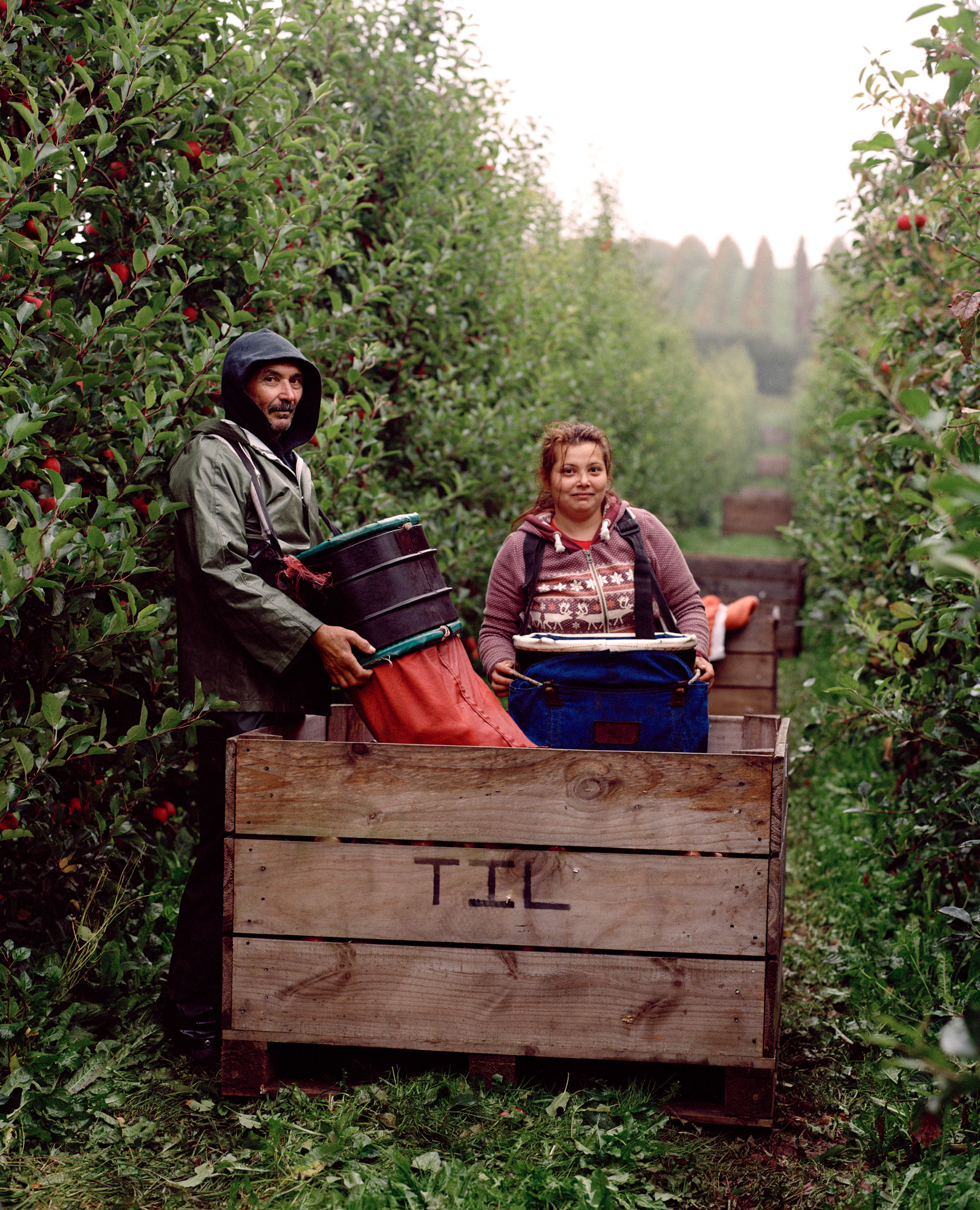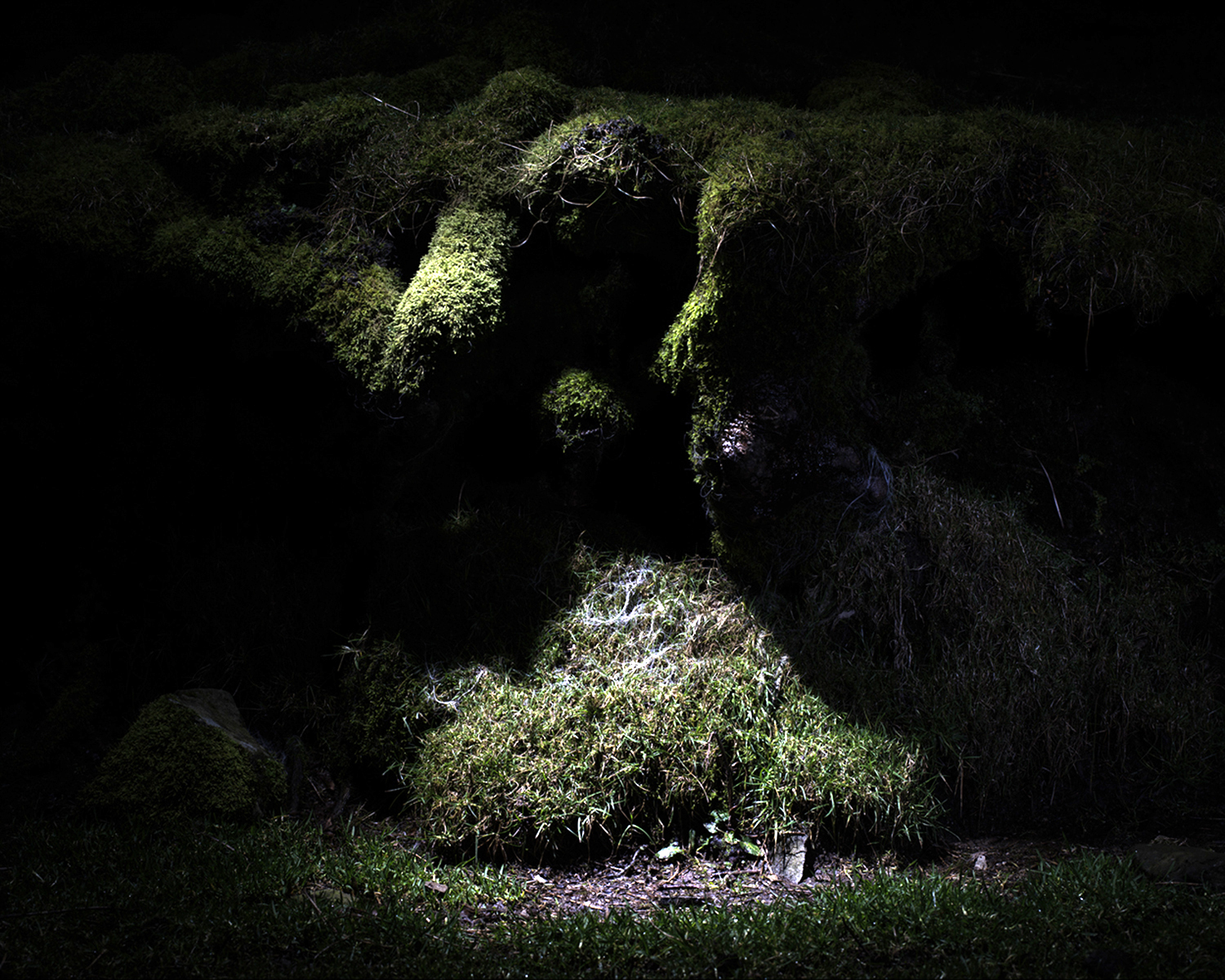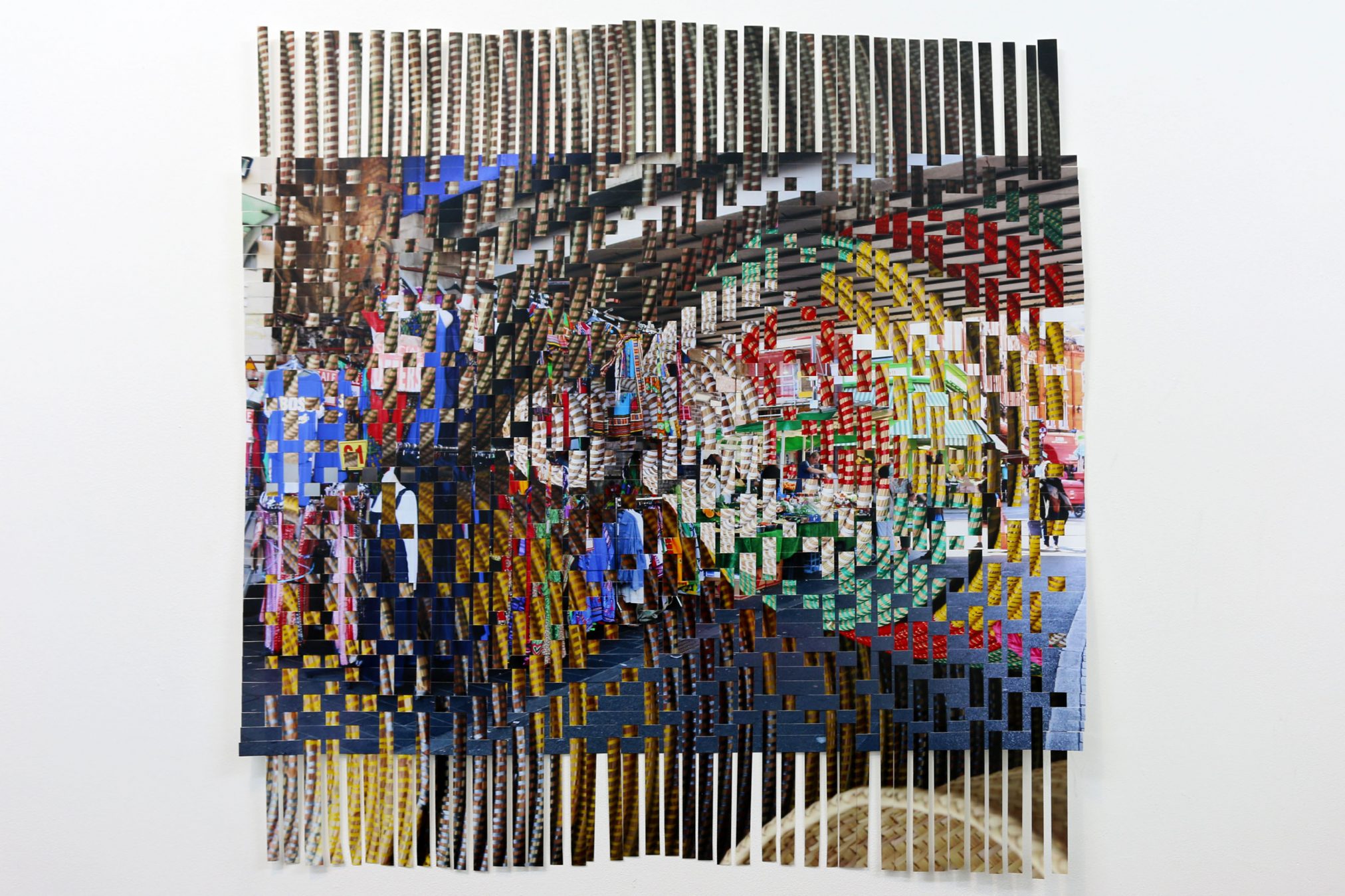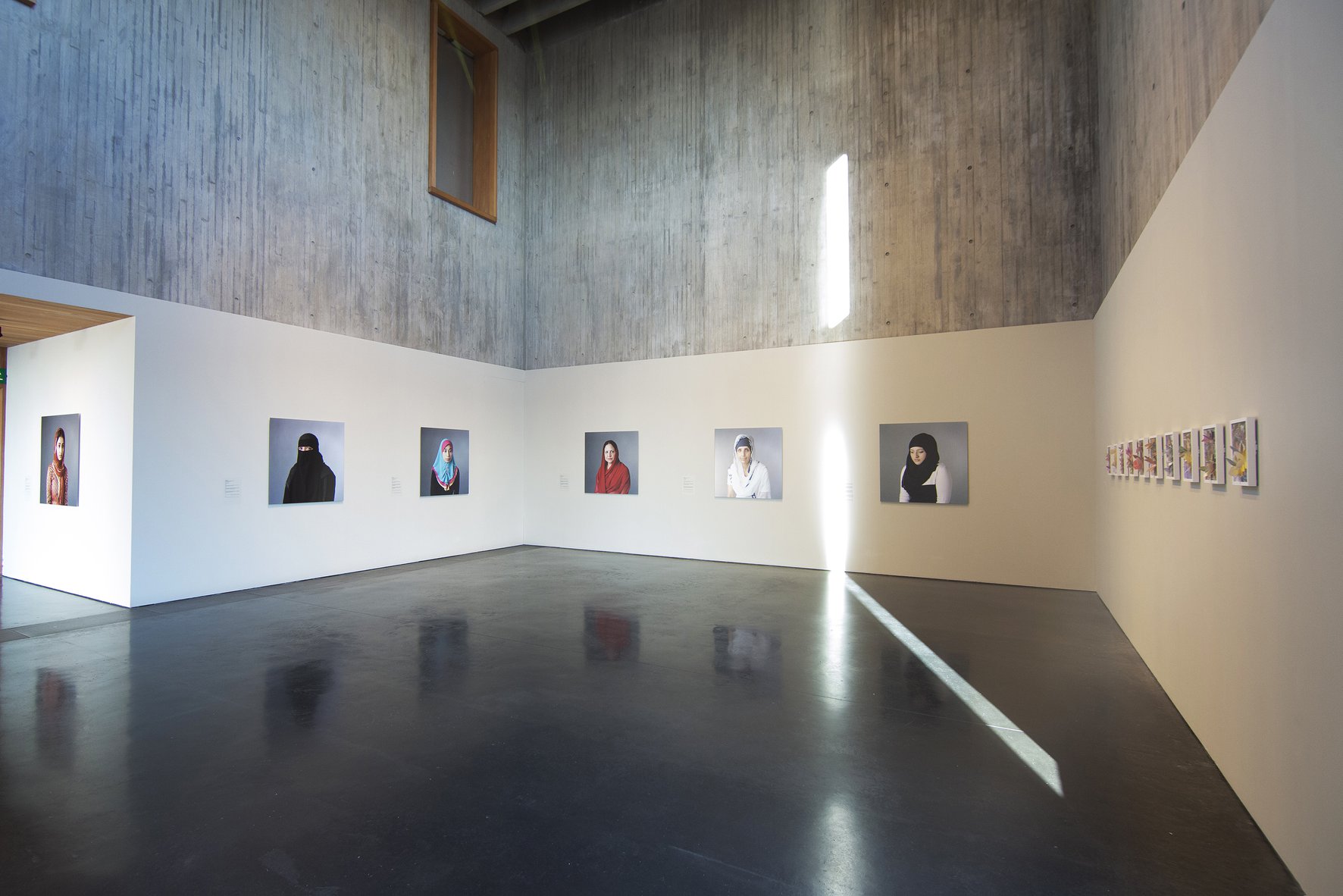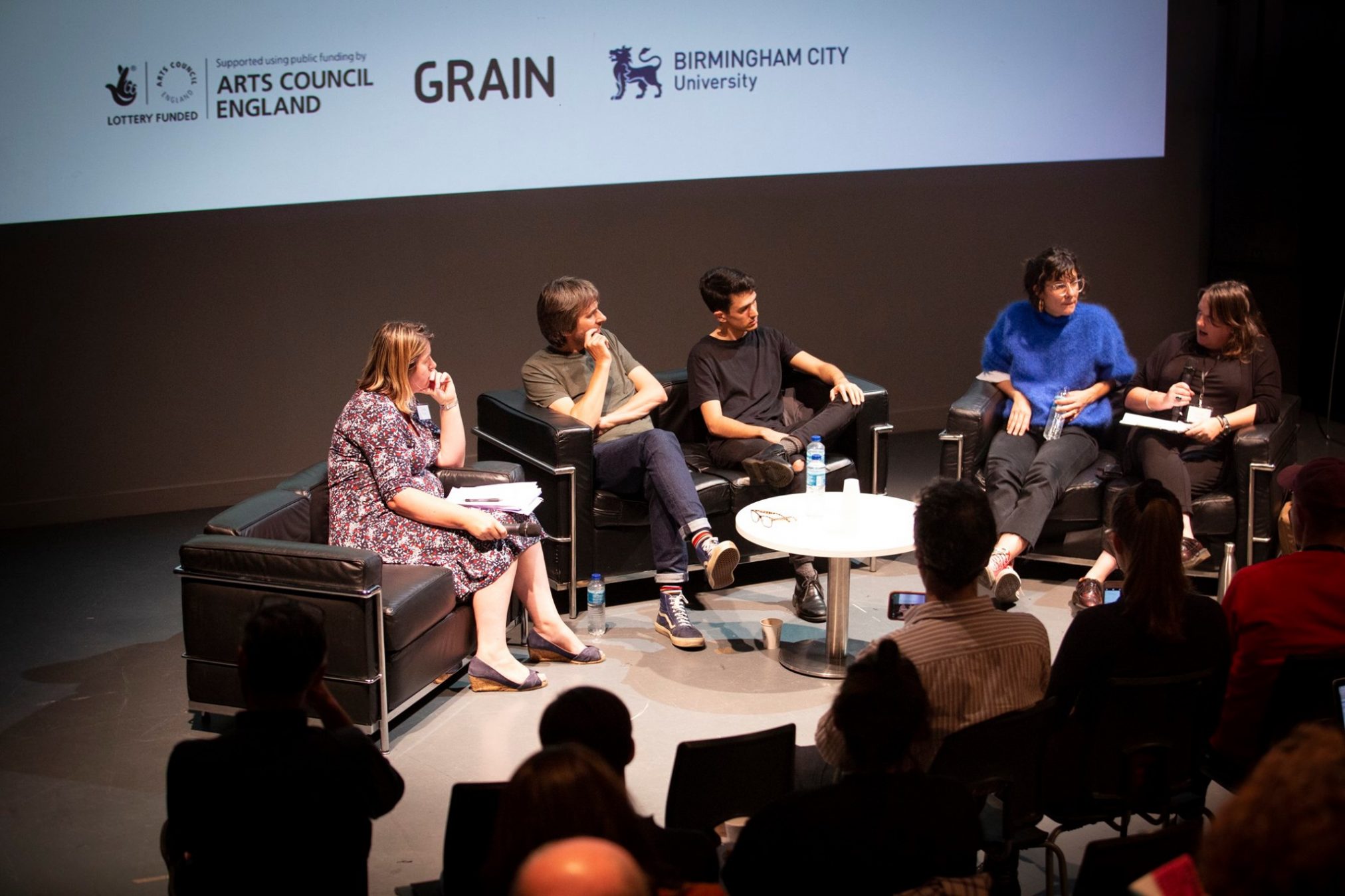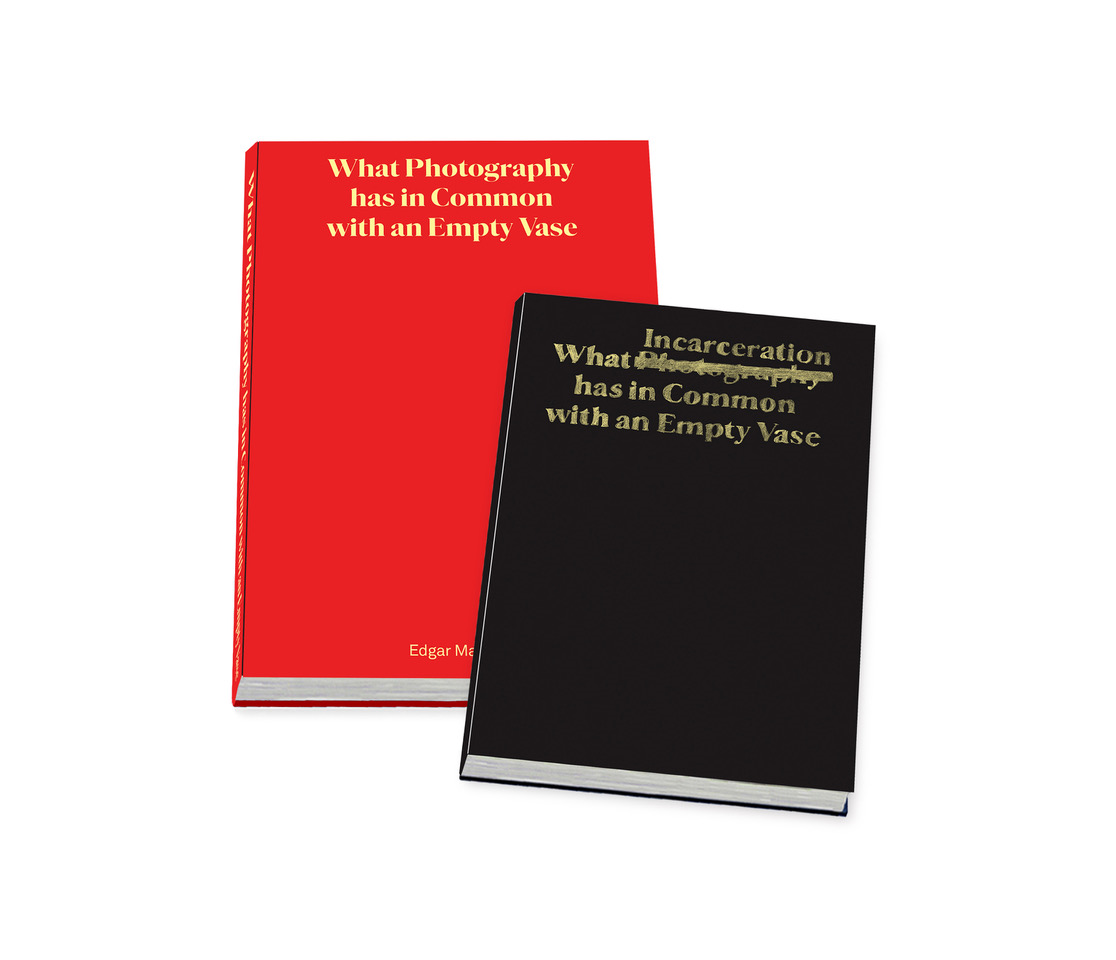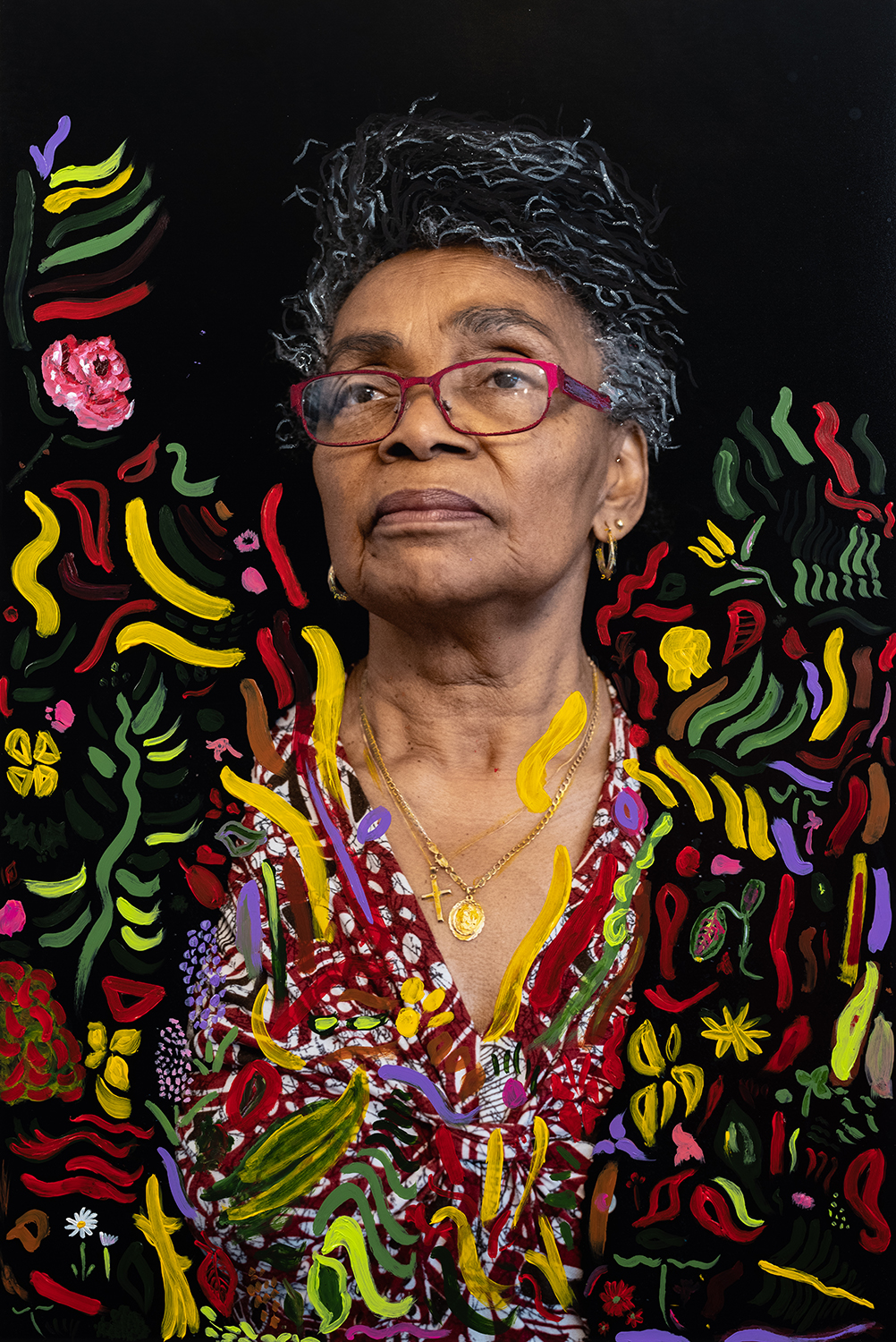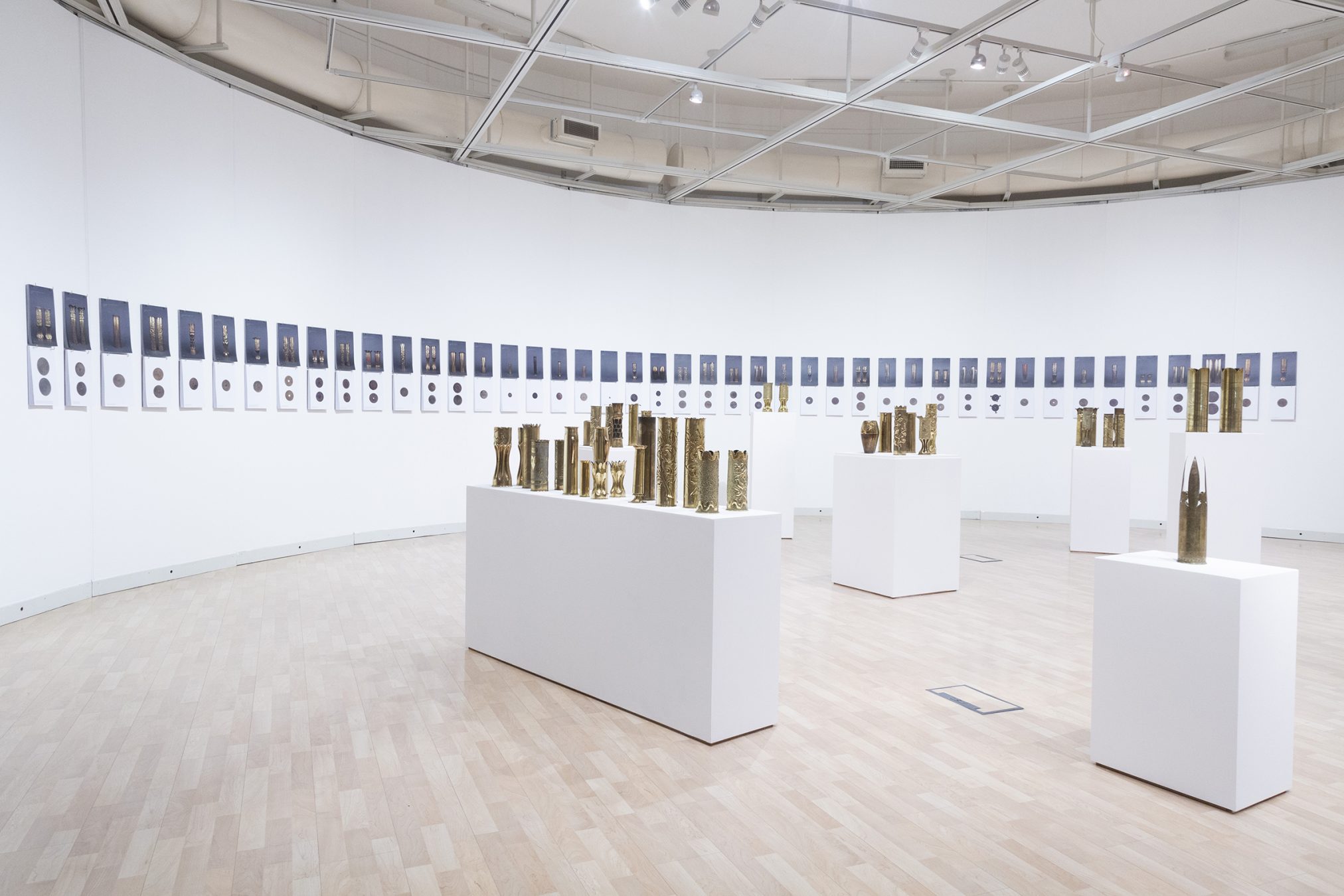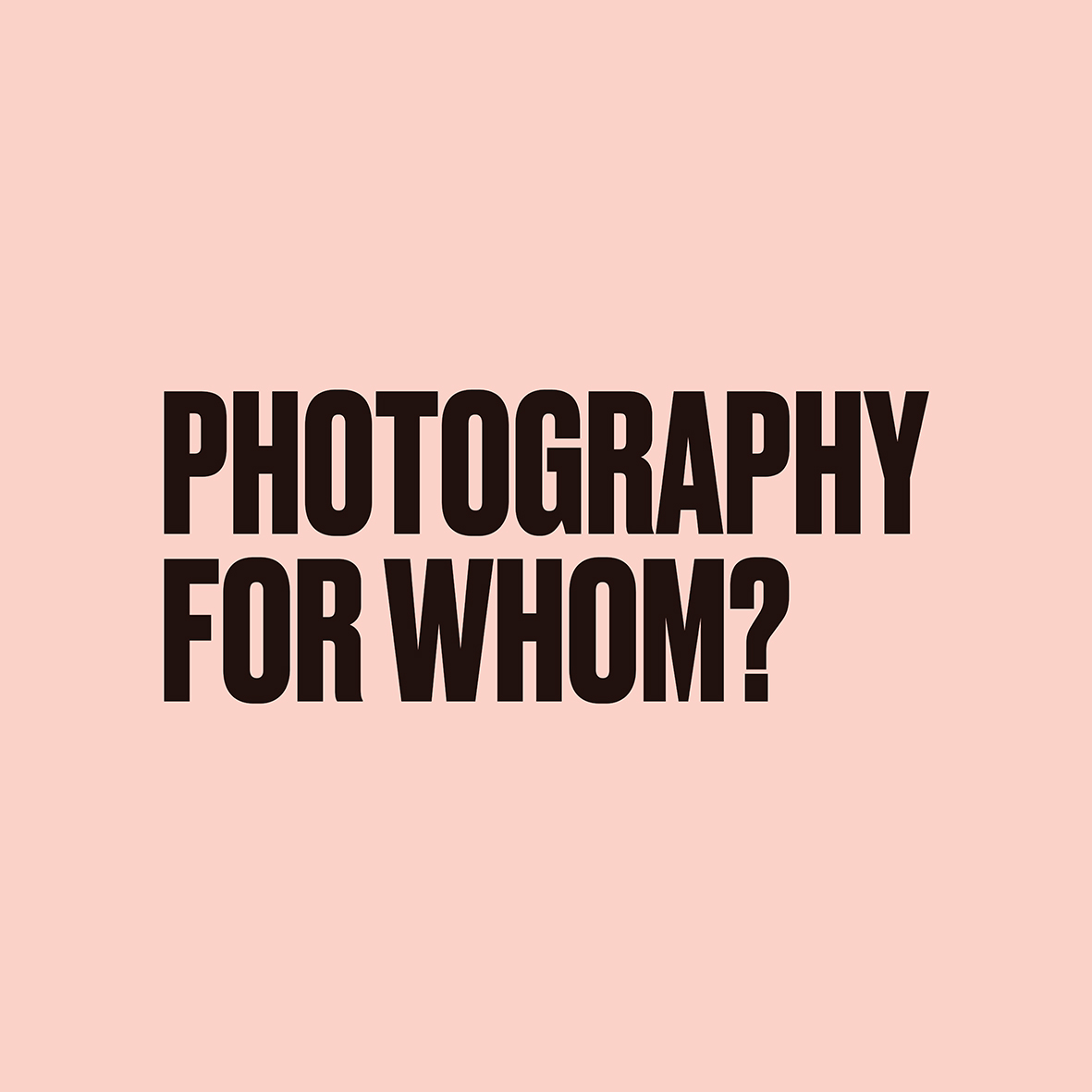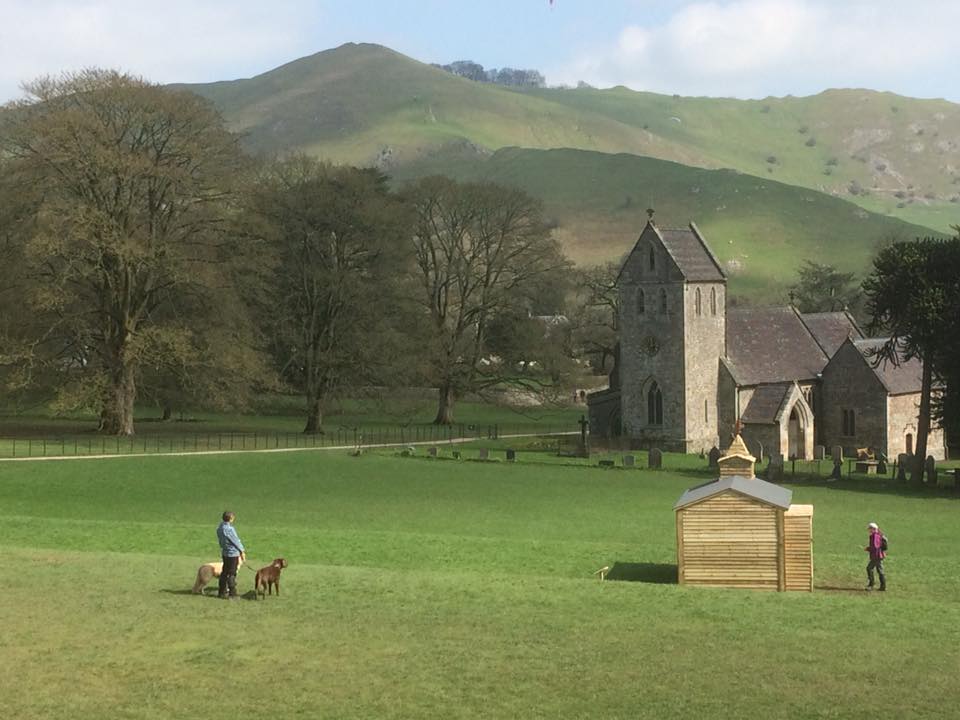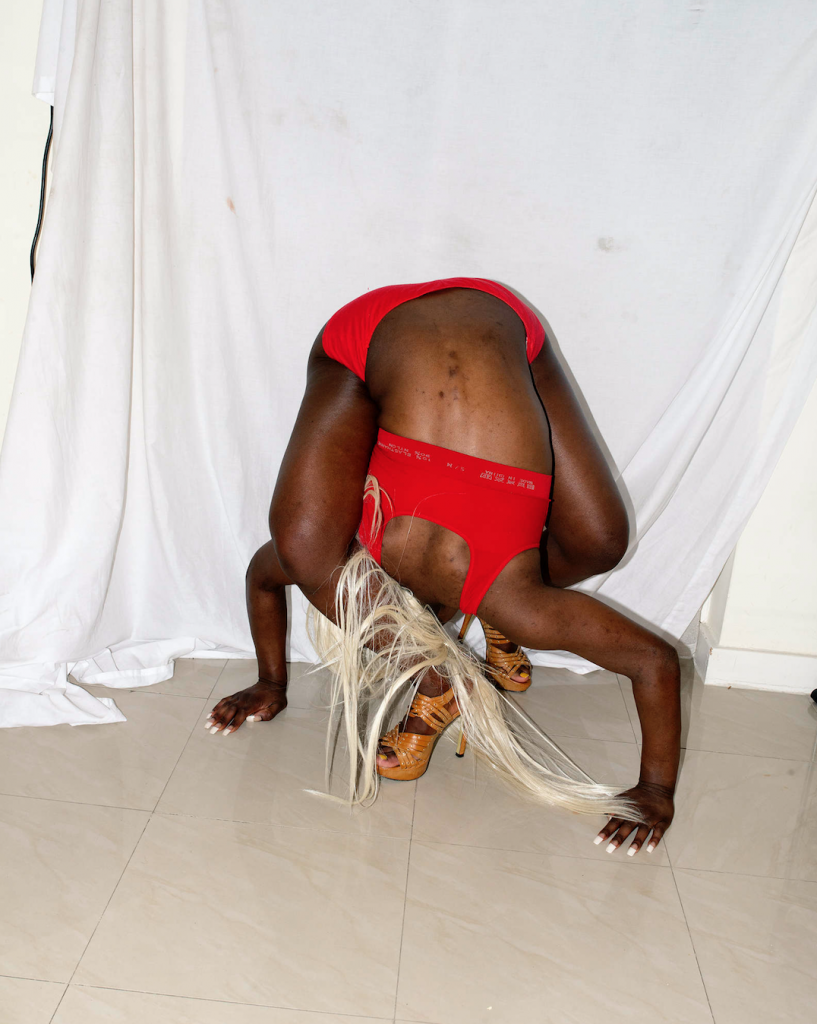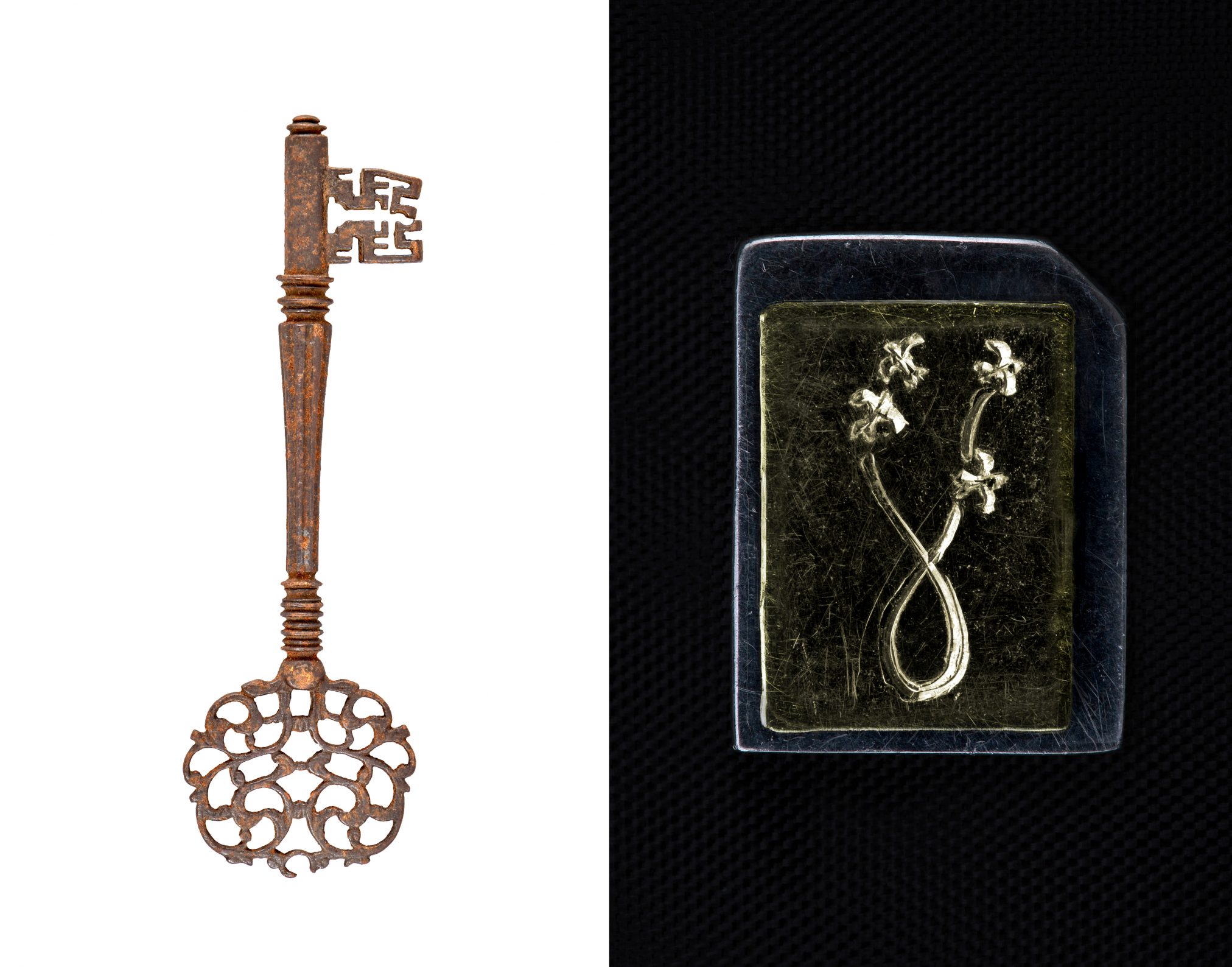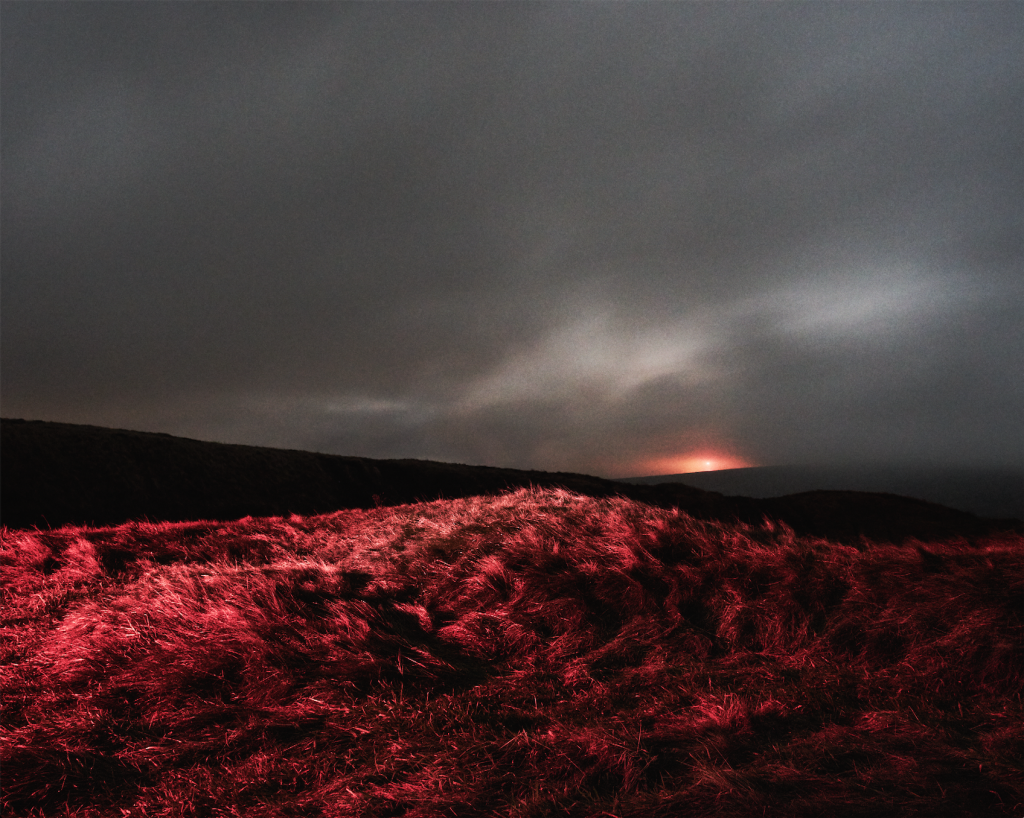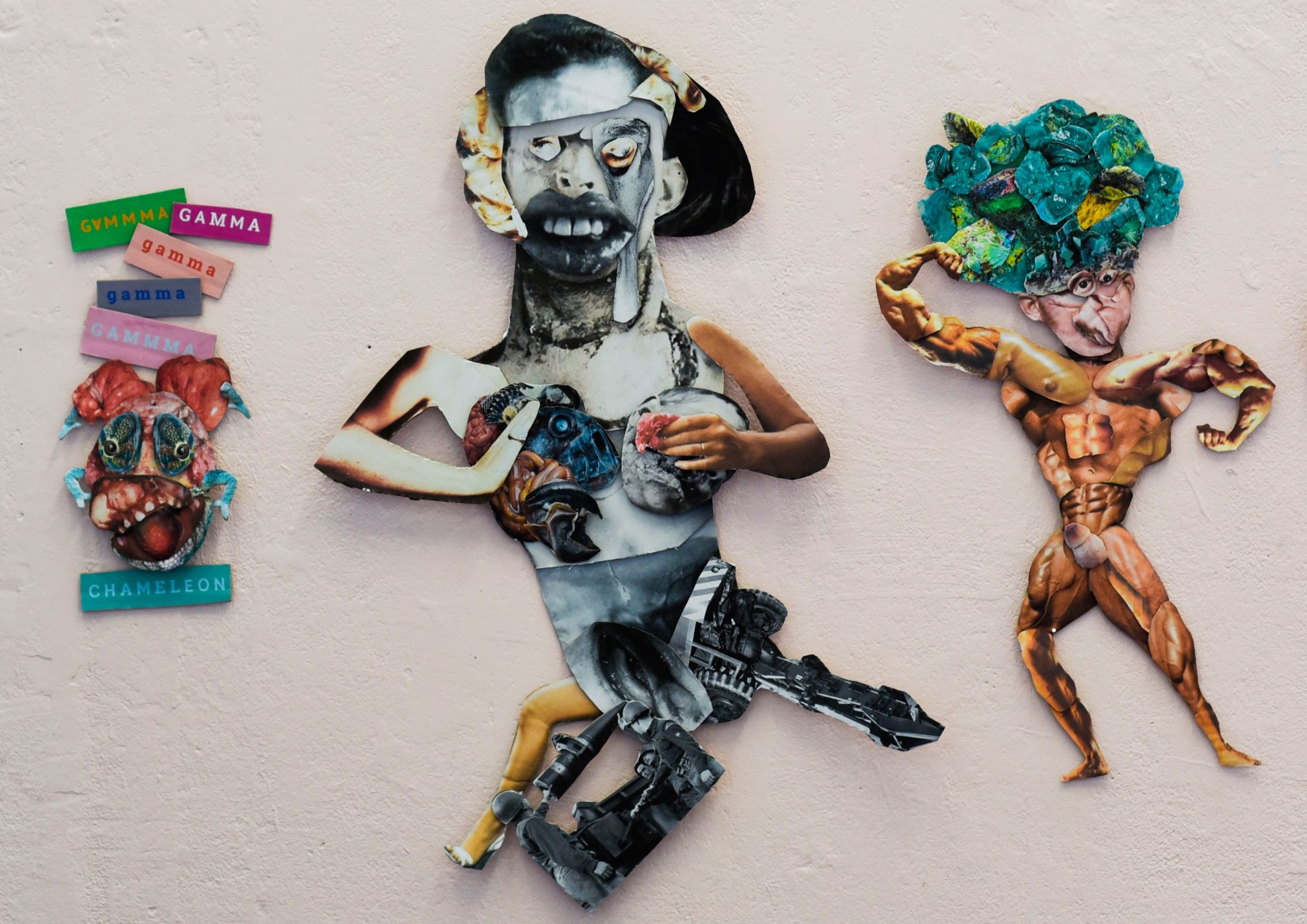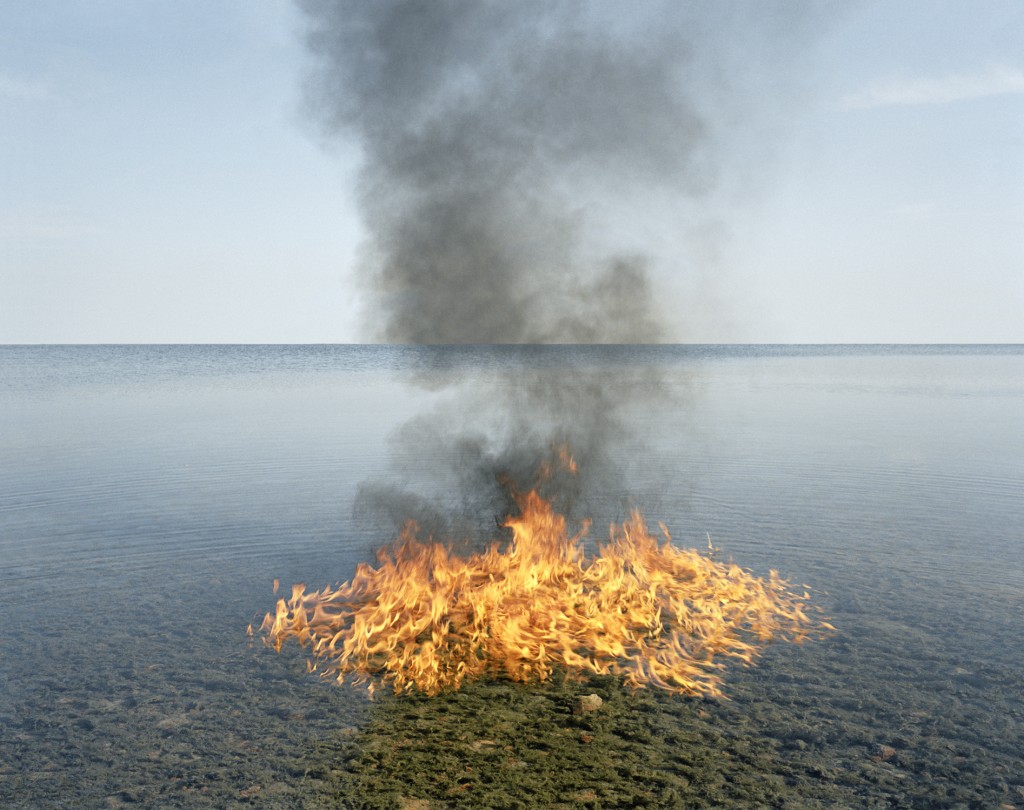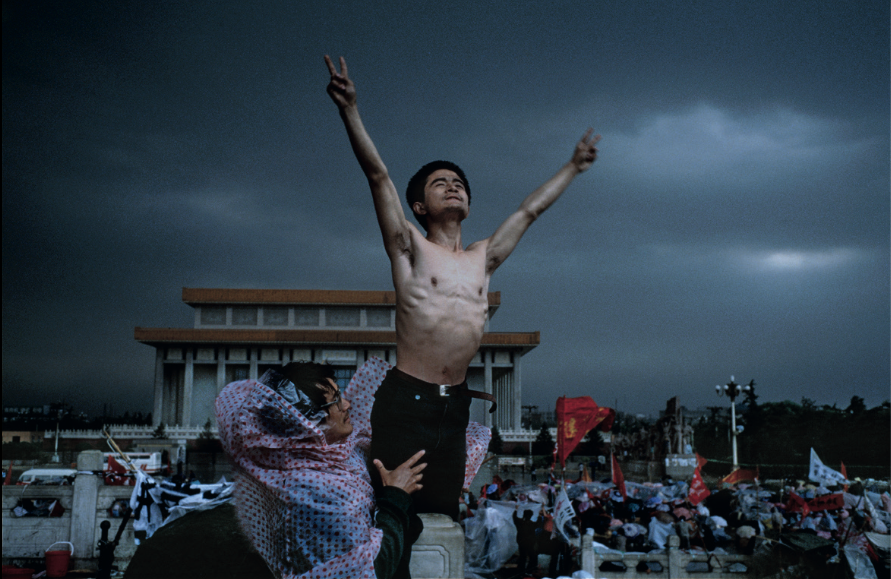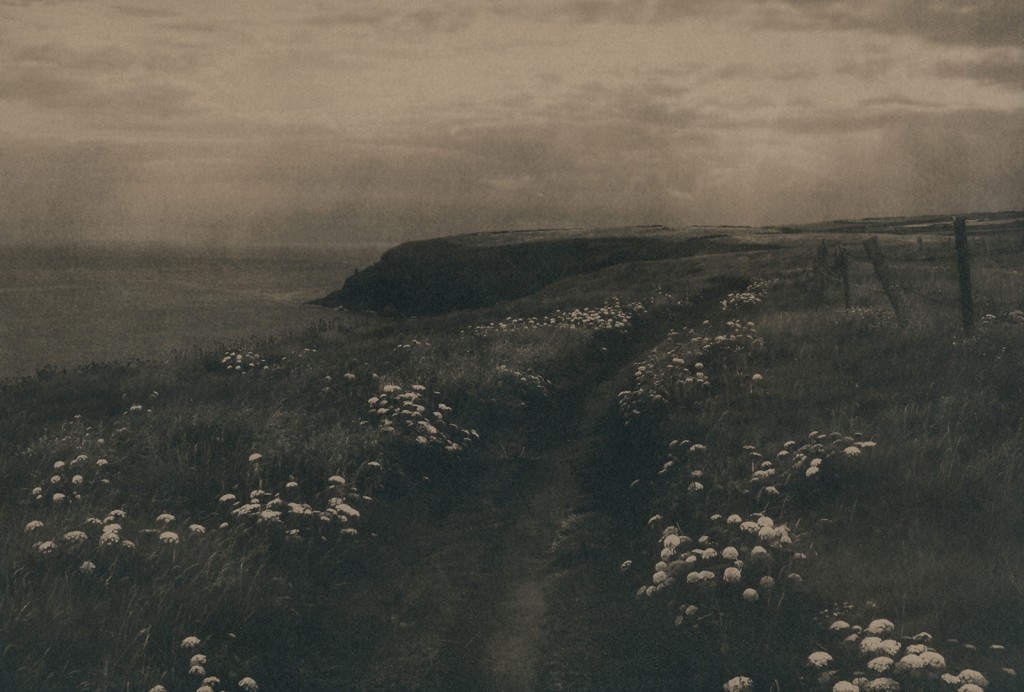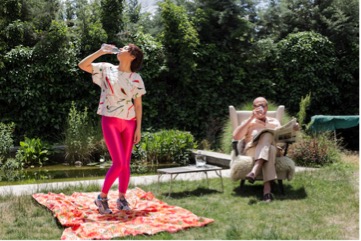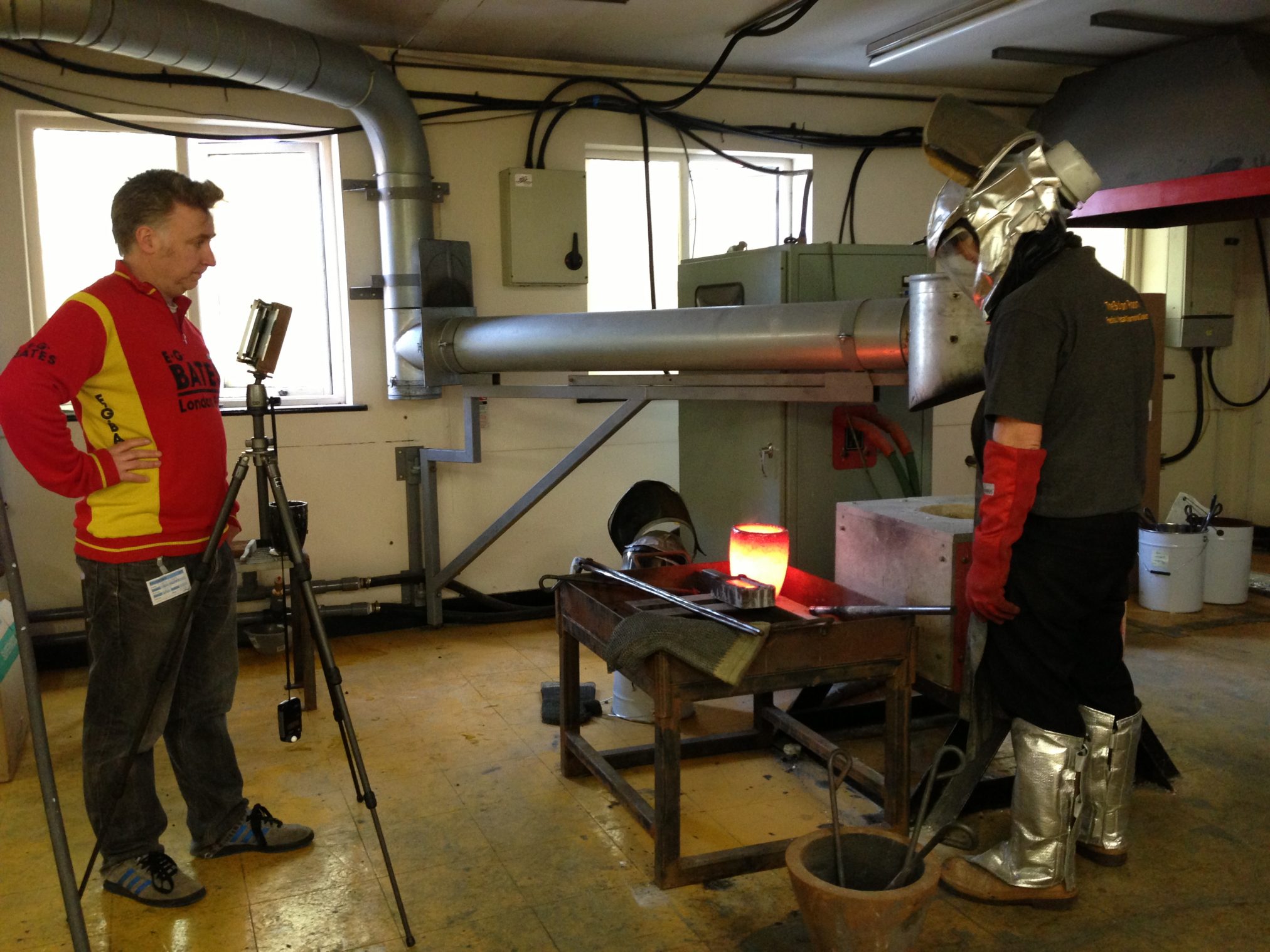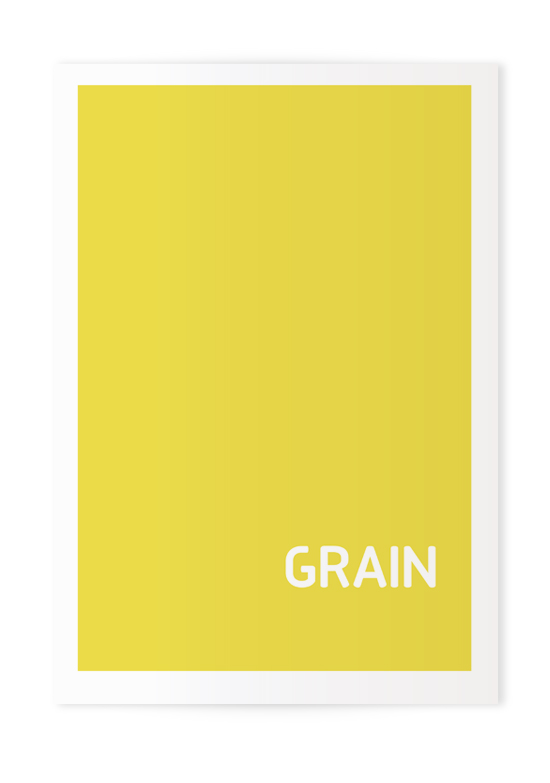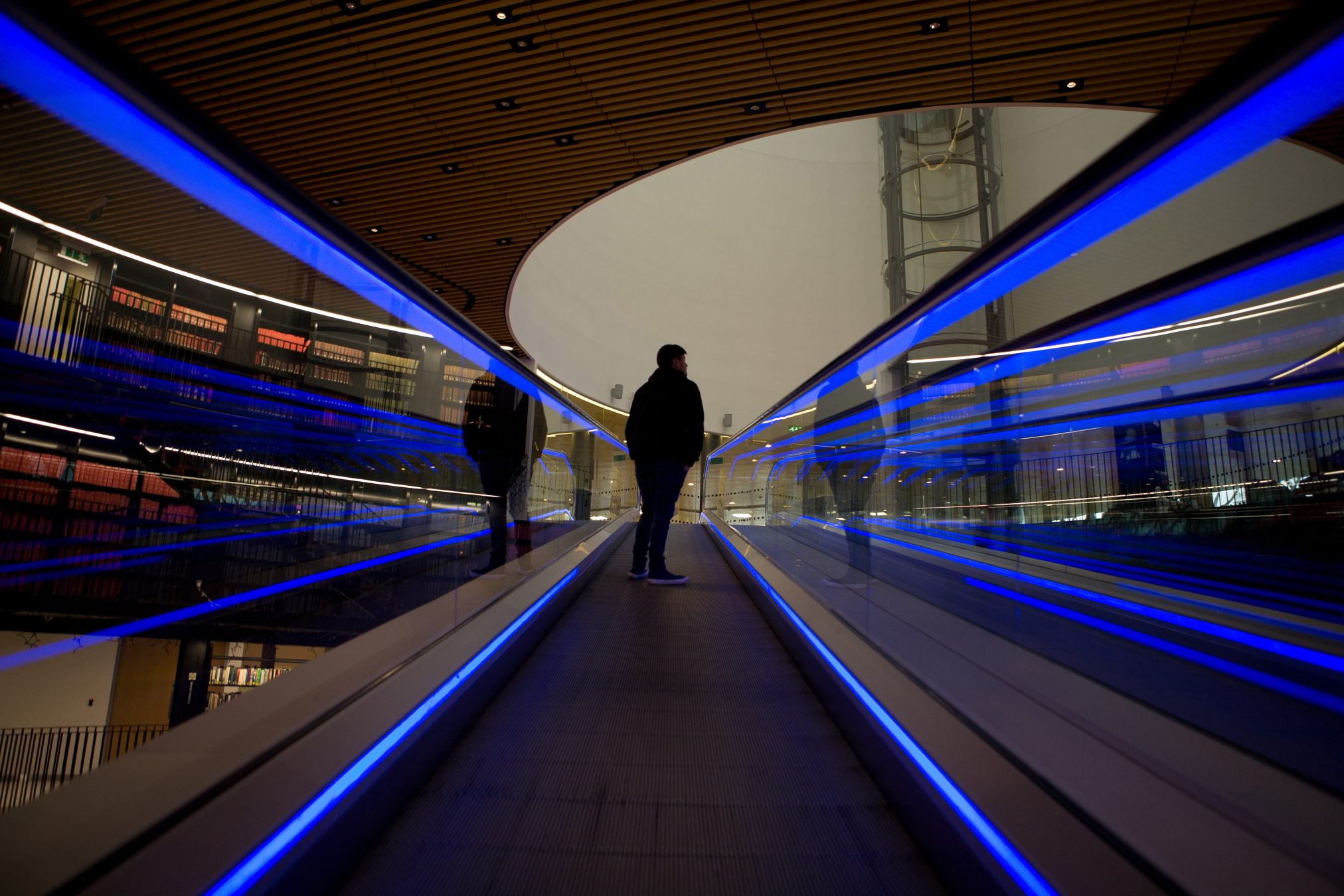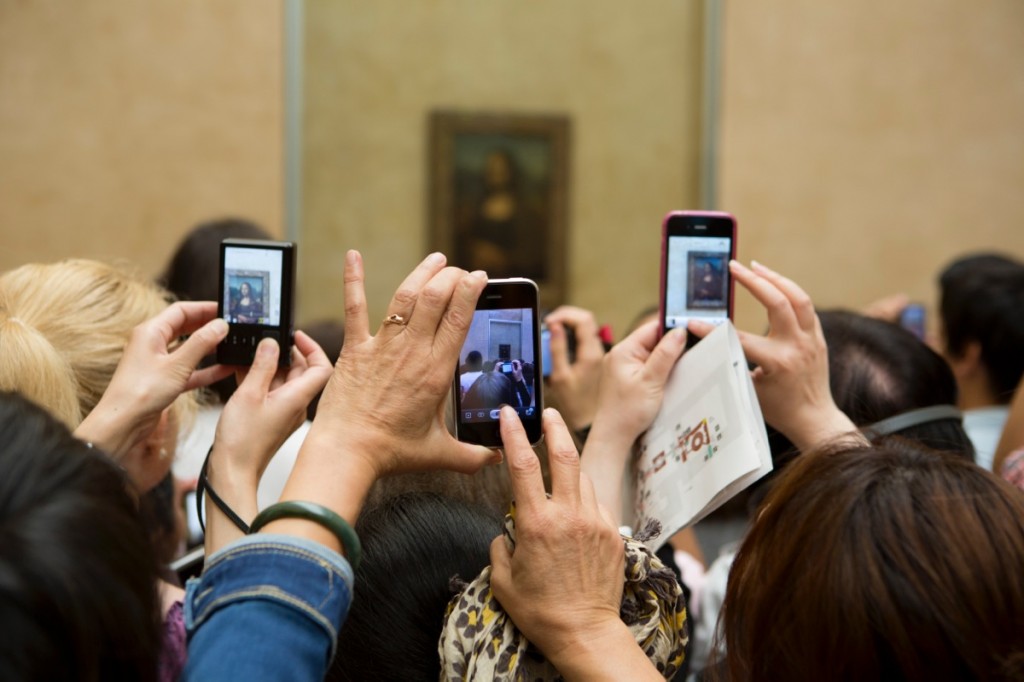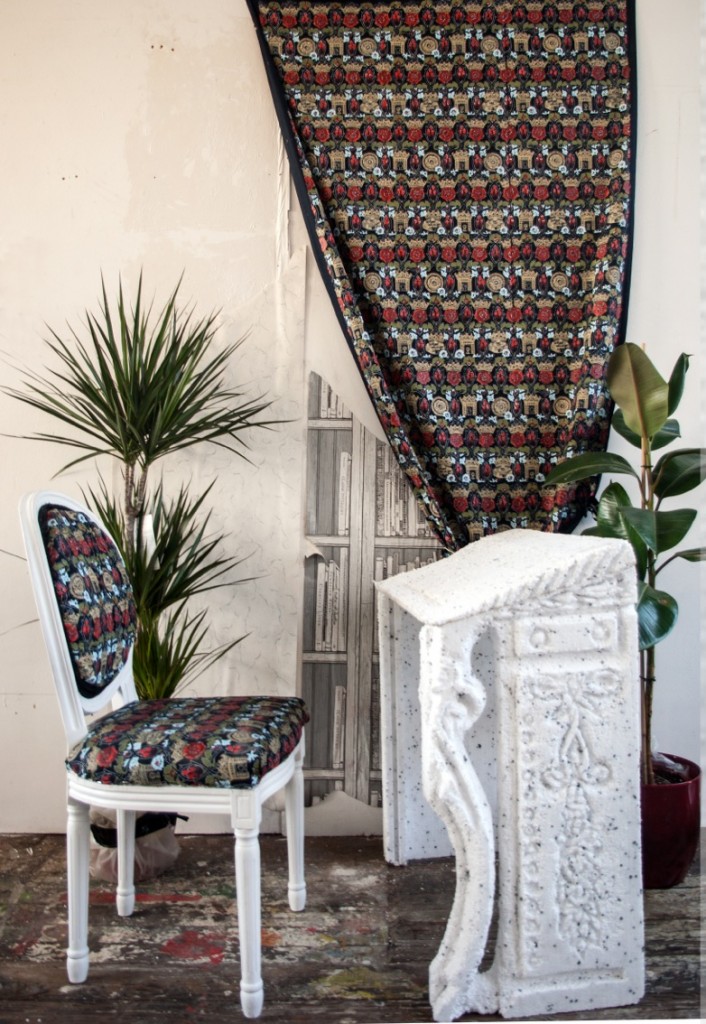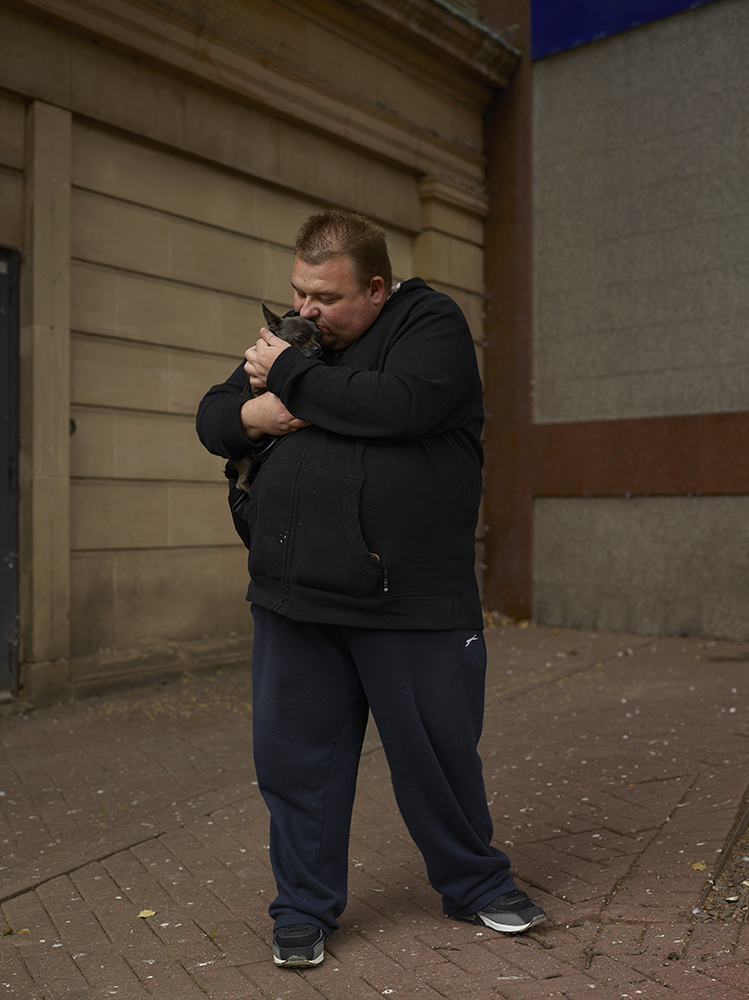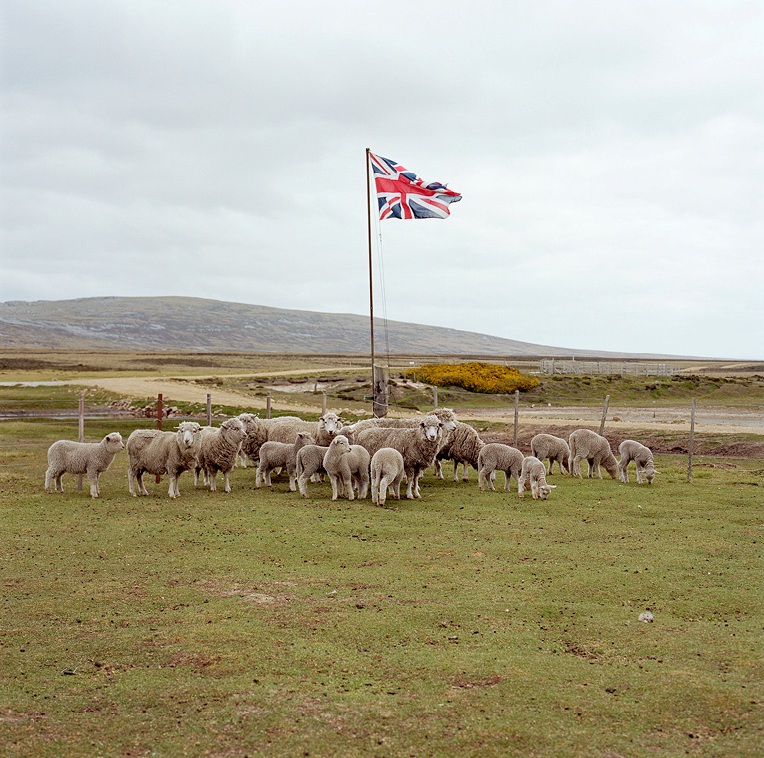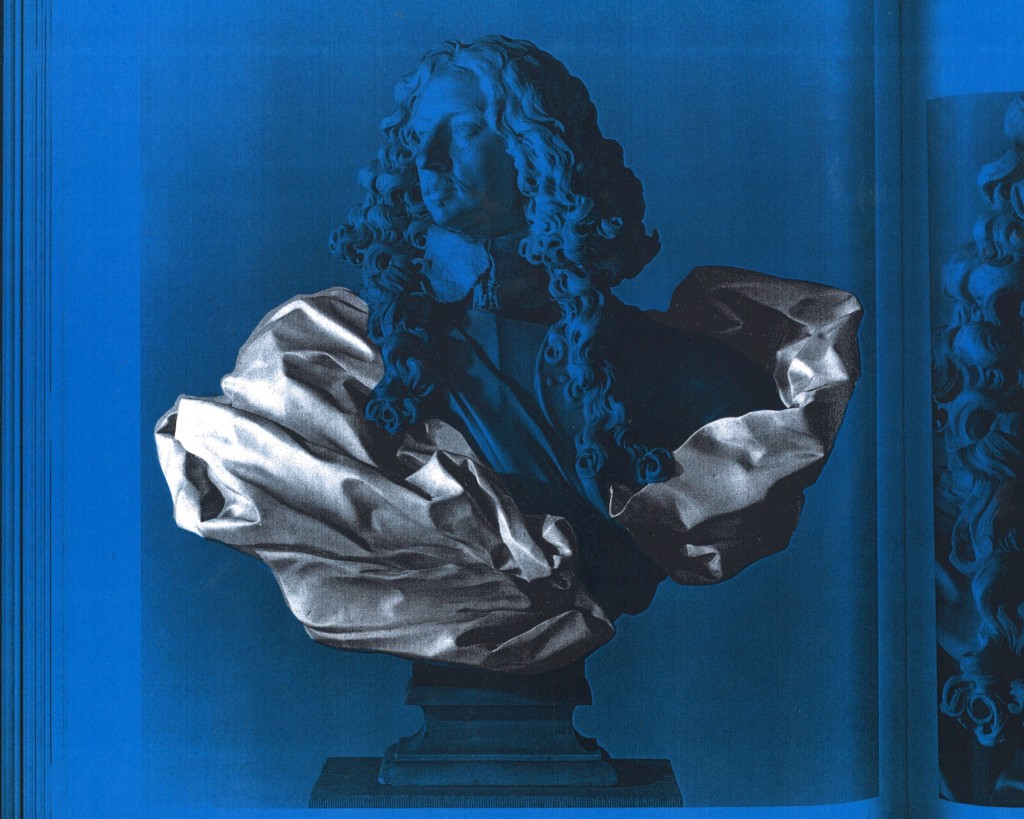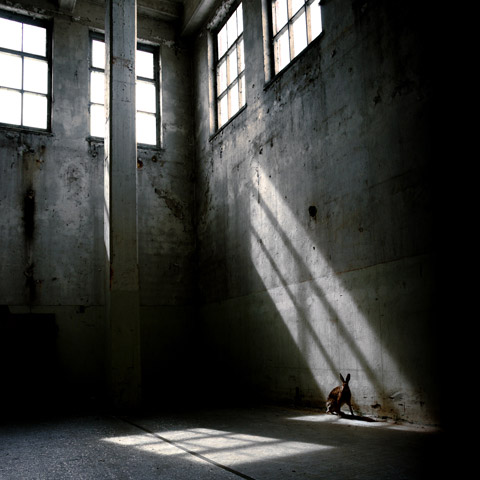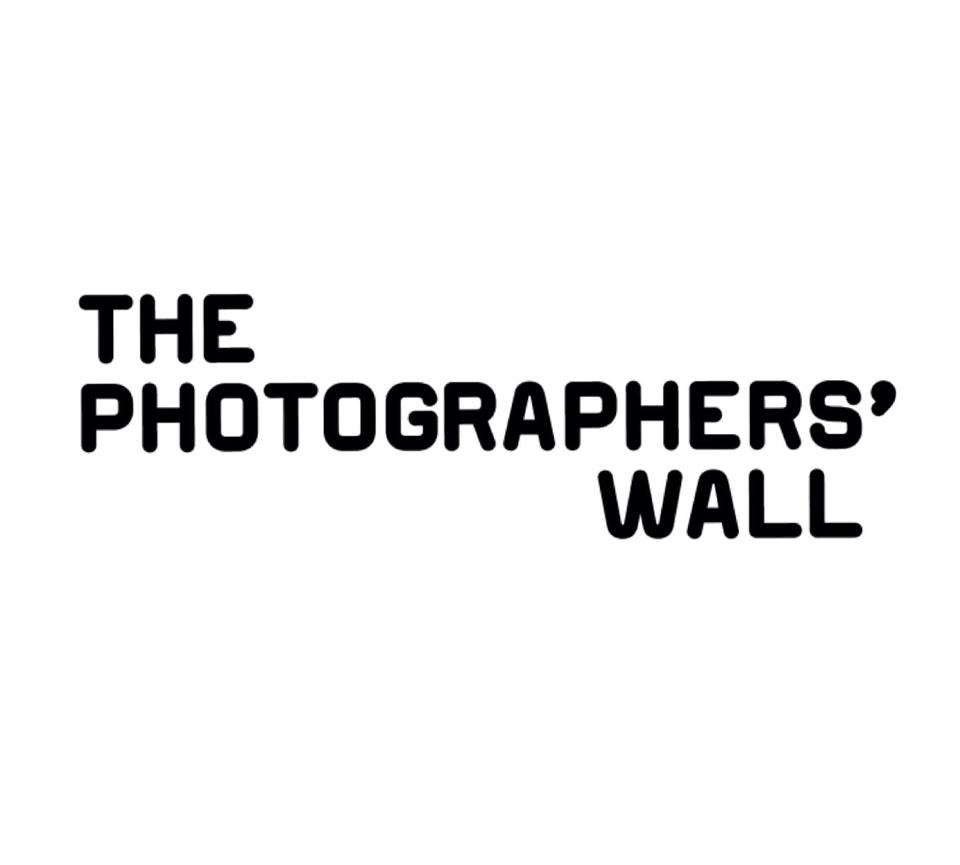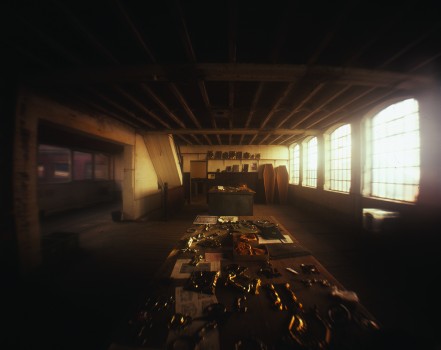01 02 2020
HARVEST
HARVEST by Marco Kesseler, made in the fields of the Wye valley and the foothills of the Malverns, where dense avenues of fruit trees and hops bines dissect the gilded fields of wheat sown across the arable land, looks towards the workers.
In his project he reflects on a moment in time to tell the evolving story of an essential workforce living on the periphery of society. He shows teams of people rushing back and forth between plants and trucks picking as they go. This is not the timeless, bountiful epitome of the rural idyll but the uncertain, Brexit controlled agricultural industry, revealing the uneasy relationship between the nation’s reliance on seasonal workers, and growing English nationalism. 99% of seasonal staff in the UK migrated from Europe and this project looks to celebrate some of the individuals that sustain an essential industry.
Marco Kesseler is a photographer based in the UK, with an interest in the role of narrative, studying both fact and fiction, as a reference point in representing contemporary social stories. Working with communities over an extended period of time, previous works have documented the socio-political effects of the Ukrainian revolution; living in hiding with Albanian families persecuted in the age old traditions of blood feuds, as well as celebratory traditions in Greece.
Past exhibited works have been included in The Taylor Wessing Portrait Prize, Paris Photo, PhotoIreland Festival, The Renaissance Photography Prize and The Sony World Photography Awards and clients include The FT Weekend Magazine, The New York Times, TIME and The British Journal of Photography.
Image Credit: Marco Kesseler
28 01 2020
New Narratives
Photographic artists Nilupa Yasmin and Thanya Mavish (Birmingham, UK) and Waleed Zafar (Lahore, Pakistan) and Samsul Alam Helal (Dhaka, Bangladesh) took part in a international digital artist exchange, supported by Transforming Narratives.
GRAIN Projects worked with partners Tasweerghar (Pakistan’s first and only space dedicated to photography) and Pathshala Institute (the South Asia Media Institute specialising in visual arts in Bangladesh) to create this opportunity as part of Transforming Narratives, supported by the British Council.
Find out about the project and the artists involved in this Digital Zine:
Click on the bottom right to see the zine full screen. Download the zine to print at home here.
The Zine was designed by Mark Murphy
Image Credit: Nilupa Yasmin & Samsul Alam Helal

Grain Projects, New Art West Midlands, Aarhus Billedkunstcenter and Galleri Image are delighted to announce that Laura Dicken has been selected as the successful recipient of the International Bursary 2020. Laura will now undertake a period of research in Aarhus, Denmark, in March 2020.
Laura’s research proposal was selected by representatives from each of the four organisations from a batch of very strong and exciting proposals. The panel were particularly impressed by the focused, specific approach Laura took to her proposal and by the clear case she made for the impact of the bursary upon the development of her practice.
Laura’s work ‘You Are Another Me’ explores migration through the lens of the female (and female identifying) experience. The project includes portraits and stories of women from a broad spectrum of socio-economic backgrounds and ethnicities who have, for various reasons, migrated alone. By facilitating the telling of these disparate stories she hopes to bring new voices to the migration narrative and to highlight not only the vast differences but to celebrate and illuminate the many similarities. Having worked with participants in Copenhagen, in a pilot of this project, Laura is now able to use her research methodologies to connect with communities in Aarhus, to promote understanding, compassion, international cooperation and collaboration.
Laura’s ongoing body of work is a series of projects which are collaborations with individuals, communities and arts organisations. Through her work Laura hopes to create opportunities for previously untold stories to be shared authentically and with agency. Her process is built around meaningful connection, conversation, workshops and photography. Laura is interested in illuminating the shared human experience and celebrating the extraordinary ordinary.
About New Art West Midlands
New Art West Midlands is the Contemporary Visual Arts Network for the region. Our purpose is to strengthen and develop the contemporary visual arts sector in the West Midlands, creating defining opportunities for West Midlands’ artists and curators, and working collectively to safeguard the future of artists and our sector.
www.newartwestmidlands.co.uk
About Galleri Image
Galleri Image is a non-profit exhibition space, which aims to promote high quality photo-based art by showing Danish and international photography and video art. Founded in 1977, the gallery is the longest running non-profit exhibition space for photographic art in Scandinavia, and for many years it was also the only photo gallery in Denmark. Over the past 40 years, Galleri Image has achieved an international reputation for its exhibitions and has contributed considerably to the recognition and understanding of photography as an important and independent medium in the world of visual art. Based in Aarhus, Denmark, and with free entry to all its shows, the gallery regularly hosts talks, discussions, seminars, workshops and guided exhibition tours. We actively seek to support young talents and frequently tour our exhibitions around the world.
www.galleriimage.dk
About Aarhus Billedkunstcenter
Aarhus Center for Visual Art (Aarhus Billedkunstcenter, AaBKC) is an artist resource center serving visual artists in Denmark’s Central Jutland region. Based in Aarhus, Aarhus Center for Visual Art strengthens the local arts community by creating opportunities for networking and collaboration between artists and institutions, offering professional development services to artists, facilitating discourse and community outreach with public art events and hosting residencies for local and international artists and art professionals.
http://aabkc.dk/page/about-aarhus-center-visual-art
Photo Credit: Laura Dicken

14 10 2019
Arenig
Arenig is the name of the mountain to the north-west of Lake Bala, North Wales, where Birmingham based artist Matthew Murray has produced a series of landscapes in response to the work of painters J. D. Innes and Augustus John. Murray’s approach is a personal representation. He depicts the landscape through what he feels rather than what he sees. Curator Roger Watson said of the work, ‘a series of dark mysterious landscapes that are cinematic, giving an emotional response as well as a sense of the solidity and earthbound sensation of the environment.’
The Arenig series explores modern printing processes and early historical alternative printing techniques and how different printing approaches can give a different understanding and interpretation towards the final physical image. Photographing at Arenig and its surroundings, documenting diverse landscapes, surfaces and textures throughout; the different seasons allow Murray to experiment using a number of printmaking processes, each process giving a different result.
GRAIN supported the development of Arenig at a key time in the project, supporting collaborative opportunities and events as well as the making of the work. Matthew Murray went on to study a PhD at the University of Gloucestershire.
This project was also supported by Arts Council England and the University of Gloucestershire
13 10 2019
Made in Brixton
In 2019 GRAIN invited and supported artist Nilupa Yasmin to undertake a short residency at Photofusion and Brixton Market. During the residency Nilupa created new work that explored the identity, colour and energy of the market. Weaving the work became performative and Nilupa led workshops at Photofusion for a number of Saturdays.
The final work was exhibited at Photofusion and the opportunity provided Nilupa’s first London based exhibition and residency, contributing to her professional development at a key time in her practice.
Nilupa Yasmin’s work is primarily lens based, while taking a keen interest in the notion of culture, self-identity and anthropology. Combined with her love for handcraft and photographic explorations, the artist repeatedly draws upon her own South Asian culture and heritage. The practice of weaving, passed down through inheritance, has become an integral exploration in the development and expression of human value. Her research examines the principles of craft in art-based practice; becoming an evident methodology shown throughout her work whilst investigating ideals and traditions that are very close to home. Nilupa has gone on to complete an MA in Photography at the University of Westminster.
www.Nilupayasmin.com
www.photofusion.org
19 09 2019
‘Too Rich a Soil’
GRAIN in collaboration with The New Art Gallery Walsall presented an exhibition which brought together three photographers, Arpita Shah, Maryam Wahid and Nilupa Yasmin whose practices are rooted in the exploration of cultural identity.
Together they presented new and existing work focused around portraiture, culture and female identity. Through making work both about and in collaboration with their families and communities, these artists celebrate the rich and varied roles of women in society.
This exhibition provided an opportunity to expand upon narratives around the Asian diaspora and in particular the roles and identities of women.
A selection of works from Shah’s series ‘Purdah – the Sacred Cloth’ were shown; which presented contemporary women based in the UK from a variety of South Asian backgrounds who chose to practice traditions of head covering or veiling. West Midlands based Wahid and Yasmin created new work. Wahid’s portraits of women encountered in Pakistan, aim to recognise and celebrate women’s contribution to the economy and society. Yasmin’s self-portraits, with their multi-layered and manipulated surfaces, reflected upon femininity and cultural identity.
Exhibition Dates: 15th November 2019 – 19th April 2020..
Image Credit: Photography by Jonny Bark

23 08 2019
The State Of Photography
Symposium
Friday 11th October 2019
9:30 am – 17:30 pm
Birmingham City University, The Parkside Building, B4 7BE
The State of Photography will consider, explore, debate and review how photographers and photography practice develops and responds in this political moment. How do we look at our world today, how do we collaborate and work with communities and what does the world look like to photographers?
We invite acclaimed and outstanding photographers, artists, writers and curators who work collaboratively and in the fields of community photography and socially engaged photography to join us, to give important historical context, to debate contemporary approaches and to talk about their practice at this time of political uncertainty, international crisis and creeping right wing ideologies. Each have different approaches to making their work, to engaging with individuals and communities and to telling stories. They have been artist, story teller, observer, collaborator, explorer and researcher.
Some collaborate closely with community members, marginalised groups and those with little or no opportunity to speak out, others offer a more external perspectives on social issues and situations. Does one offer a better more ethical way? Is it important to come from a community or do you become too involved? Is objectivity important? How do we ensure the engagement is sincere and does not exploit? And where does the artist and author feature in the work?
The role of photography is changing, particularly as work is commissioned and made for exhibition and gallery settings. Photography can impart the greatest truth of our times and sheds light on injustices, inequality and other aspects of our society. It has been and remains one of the strongest vehicles for change as photographers explore polities, gender, society, sexuality, diversity, economics and environment. It seems today – a time of political unrest, flux and crisis – more essential than ever to explore the role that photography can play.
During the Symposium we will hear from the perspective of the photographer, curator and academic. They share our concerns about the present and offer a diverse range of practices, experiences and stories that document the state of humanity and the world today.
The State of Photography Symposium aims to present new bodies of work, question and challenge ideas, as well as offering advice and talking about positive approaches to influence change, provoke, prompt and give a voice. We will hear from and celebrate those that create self-initiated projects and commissioned bodies of work and see a range of photographic practices that are at the cutting edge of photography now.
Speakers Include:
- Daniel Meadows
- Anthony Luvera
- Julian Germain
- Clementine Schneidermann
- John Hillman
- Liz Wewiora
- Anand Chhabra
- Sam Ivin
Prices:
- Concession: £18
- Standard: £25
*Please note prices include tea/coffee at registration but do not include lunch.Book your tickets here
Image Credit: Photography by Jonny Bark

We are delighted to announce that the book WHAT PHOTOGRAPHY & INCARCERATION HAVE IN COMMON WITH AN EMPTY VASE by Edgar Martins is now available to order.
Commissioned by GRAIN, this multifaceted body of work was developed, over a period of 2 years, with HMP Birmingham (the largest, category B prison in the Midlands, UK), and in particular its inmates, their families as well as a myriad of other individuals and organisations (such as charities, colleges, universities and youth centres.)
Martins’ work uses the social context of incarceration to explore the philosophical concept of absence and address a broader consideration of the status of the photograph when questions of visibility, ethics, aesthetics and documentation intersect. By giving a voice to inmates and their families and address prison as a set of social relations, rather than a mere physical space, Martins proposes to rethink and counter the sort of imagery normally associated with incarceration.
His project, thus, wilfully circumvents images whose sole purpose, he argues, is to confirm the already help opinions within dominant ideology about crime and punishment: violence, drugs, criminality race – an approach that only serves to reinforce the act of photographing and photography itself as apotropaic devices.
Composed of three distinct segments, encompassing archive/new photography, text and sound, Martins’ work shifts between image and information, between fiction and evidence, strategically deploying visual and textual details in tandem so that the viewer becomes aware of what exists outside the confines of the frame.
This ambitious and thought-provoking project is now published as a beautiful, two-book publication, that includes a facsimile copy of an inmate’s journal, produced especially for this context, and carefully edited and appropriated by the artist.
In an excerpt from the journal, observed details accumulate to form a powerful way of figuring the dehumanising and life-denying force of the prison: ‘Sometimes all there is to do when you’re stuck on the wing is to lean on the thin high rails and watch what’s going on around you. That’s when I noticed thick grey fluff on a step. And more on another step. Then I noticed it at the edges of the floor and above me on the piping. It was on the top of the nuts and bolts and on top of the wires that made up the netting. It was everywhere and I had never noticed it before. The grey fluff had blended in with the grey clothing of the grey people that cast grey shadows on the grey walls. I suppose the ideal prisoner should be grey, dull and dismal in nature. THEY’VE CREATED THE PERFECT GREY SPACE HERE.’
WHAT PHOTOGRAPHY & INCARCERATION HAVE IN COMMON WITH AN EMPTY VASE contains over 500 pages, 130 photographs and documents and is supplied in a genuine prison bag, along with a surprise element.
This publication will support exhibitions of the work at Galeria Filomena Soares (Lisbon), Catharine Clark Gallery (San Francisco), the Macau Museum of Art (Macau, China), the Museum of National and Contemporary Art (Lisbon), the Geneva Photography Centre (Geneva), amongst others.
13 05 2019
Settling
In 2017 GRAIN devised a new Residency with Creative People and Places agency Appetite, for a photographer to make new work with migrant communities in north Staffordshire. Sam Ivin was awarded the Residency and created work with individuals in the community over a number of years. Settling was a collaborative, community photography project and new community archive. During 2017 and 2018 Sam led workshops and held meetings across the six towns with individuals and community groups to create a publicly accessible vernacular archive and a collection of participatory artworks.
The community archive was gifted to the city of Stoke on Trent and can be found in the city archives, providing the first archive there that featured people of colour, asylum seekers and migrants.
The contemporary portraits and community archive pictures went on to be exhibited in a largescale community space in the city centre during the annual community Big Feast Festival. In 2018 he was supported to make further portraits and these were exhibited at the city Museum & Art Gallery in a major exhibition supported by a series of workshops.
Sam has continued to make work with communities in Stoke on Trent, building an important legacy for the initial relationships and work.
07 05 2019
When The Golden Sun Is Sinking
GRAIN commissioned artist Indre Serpytyte to collaborate on research and make new work that focused on conflict, women’s experiences and the heritage of the Midlands region. This project was exhibited at Rugby Art Gallery & Museum.
Indre began by exploring the experience of women during the two World Wars and following a period of research focused upon those employed in making munitions. It is estimated that throughout both World Wars, the Ministry of Munitions employed around a million female munitions workers in thousands of arms factories. These women played a crucial role in Britain’s strategy of “total war”. especially after Britain’s shell crisis in 1915 when there was a severe shortage of artillery shells on the front line. The women worked extremely long hours as production was focused on a 24-hour shift pattern with only one day off a week.
Using archive material from Midlands collections as well as from the Imperial War Museum Serpytyte examined the relationship between widely publicised propaganda images of the female factory workforce, as part of a political project of moral boosting, and the images, accounts and ephemera that tell the largely hidden and forgotten story of the so-called ‘munitionettes.’ In her work she looked at the history of female work and life in the context of war, violence and political strategy as well as the home as a place of waiting, loss and a repository for memory and objects. Domestic objects on shelves and mantle pieces provided keepsakes as well as reminders of lives and death. Most unsettling are the vases made from spent ammunition shells, many of which were made by women in munitions factories, decorated by soldiers and sent home for ornamentation.
In the work Serpytyte used the vases as a way to explore the complex relationship between domesticity, ornament, labour, class, gender, war and trauma. .
Indre Serpytyte (b. 1983 in Palanga, Lithuania) is an artist living and working in London, UK. Serpytyte is concerned with the impact of conflict and war on history and perception. She works with photography, sculpture and installation.
Image credit: Photography by Jonny Bark
11 04 2019
Photography For Whom?
Photography For Whom? is a new periodical focused on socially-engaged photography. Published biannually, Photography For Whom? seeks to shine light on significant yet overlooked work of the past and to generate debate about contemporary practice, by bringing writing and practice from the community photography movement back into circulation from sources which are out of print, largely unknown or difficult to access. Each issue presents a historic text alongside a newly commissioned piece of writing to foster critical consideration of socially-engaged photography today. www.photographyforwhom.com
Photography For Whom? is edited by Anthony Luvera and supported by GRAIN Projects and Multistory.
For more information and to purchase a copy of Photography For Whom? Please visit – photographyforwhom.com
23 10 2018
Sixteen
In partnership with multiple national photography organisations and led by Open Eye, SIXTEEN was a collaboration with young people from across England conceptualised by photographer Craig Ashley. GRAIN worked across the West Midlands with photographer Kate Peters and sixteen year olds from diverse backgrounds to create a series of portraits for the national touring exhibition.
Photographer Craig Easton had conceptualised this initiative after engaging with sixteen-year-olds during the Scottish Referendum. This was the inaugural, and to date, the only time when sixteen-year-olds were granted voting rights. He then invited some of the UK’s leading documentary portrait photographers, Linda Brownlee, Lottie Davies, Jillian Edelstein, Stuart Freedman, Sophie Gerrard, Kate Kirkwood, Kalpesh Lathigra, Ronan McKenzie, Roy Mehta, Christopher Nunn, Antonio Olmos, Kate Peters, Michelle Sank, Abbie Trayler-Smith, Simon Roberts, and Simon Wheatley, to collaborate with young people throughout the country to create a visual vox pop. Sixteen is an age marked by transition, development, and societal change. During this time of heightened national and international anxiety, these young individuals transition from adolescence to becoming the adults shaping a politically redefined nation, separate from the European Union.
SIXTEEN was exhibited as a largescale public realm exhibition outside Millennium Point and the Birmingham City University Parkside building.
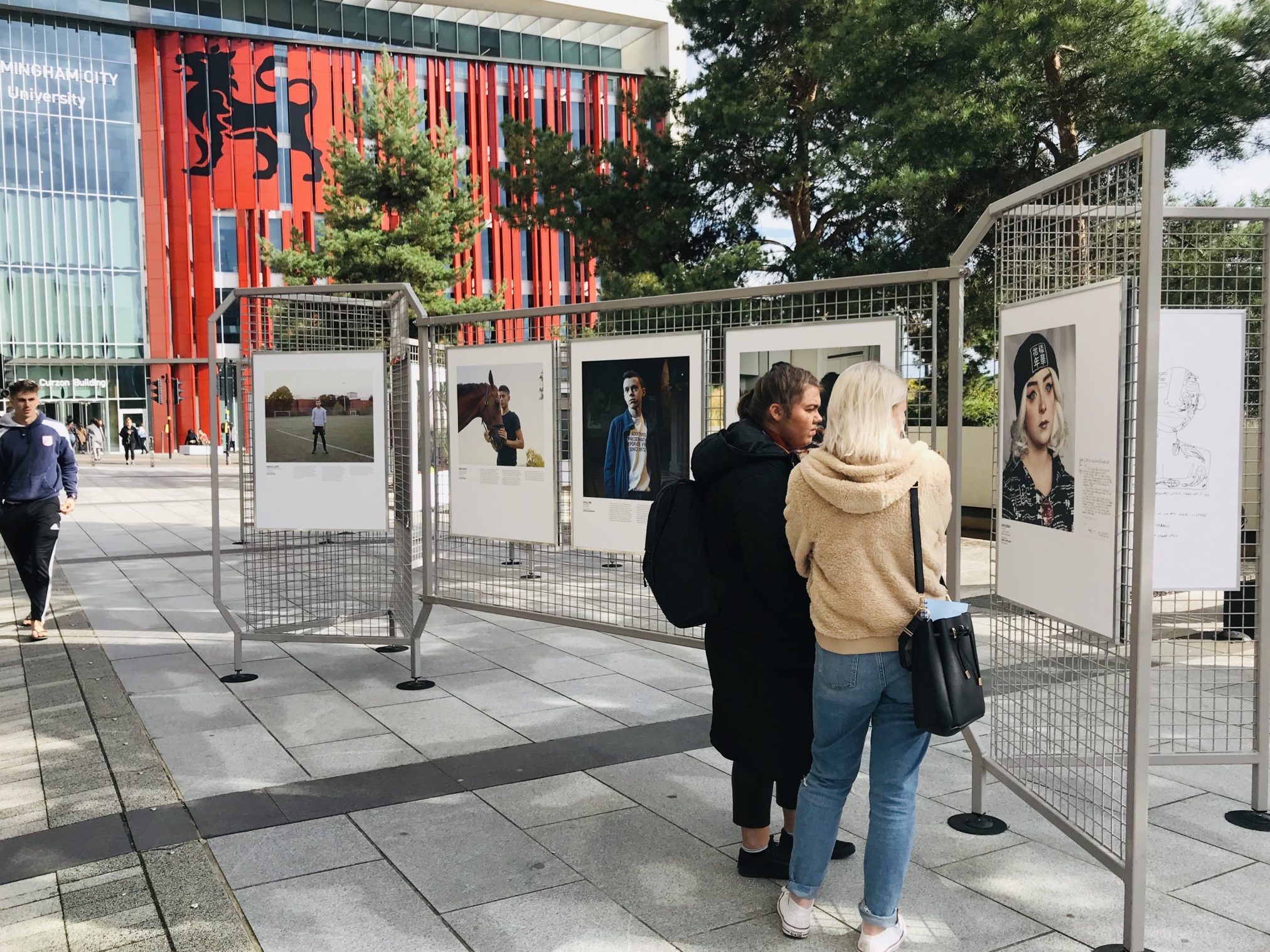
Image credit: Abdullatif, Coventry 2018, (c) Kate Peters
24 09 2018
THE FACE OF SUFFRAGE
The Face of Suffrage was a large scale public art commission conceived and made by Helen Marshall as a mass participation project, celebrating and commemorating 100 years of the vote for women in England.
The artwork created was installed on the floor of the main concourse of Birmingham New Street, measuring 200 metre-square, it was a photography mosaic made up of almost 4000 images of women provided by people from across the West Midlands and beyond. When viewed from above, it showed a portrait of Hilda Burkitt, a leading face from the suffrage movement in the West Midlands. Evaline Hilda Burkitt was born in Wolverhampton in 1876 and died in 1955. She was the first suffragette to be forcibly fed a total of 292 times, whilst imprisoned, and had a job at the Birmingham WSPU (Women’s Social and Political Union) headquarters in Birmingham. She was imprisoned for throwing a stone at Prime Minister Herbert Asquith’s train as it pulled out of Birmingham New Street, after he attended a male-only budget meeting.
The image is made up of a combination of archive pictures of women involved in the Suffragette movement in the early 1900s and of females today, submitted by the public.
In association with the artwork GRAIN curated an exhibition of historical portraits of Suffragettes at Birmingham Hippodrome Theatre. A Talks Programme was also produced which included talks by the artist as well as by historians and archivists.
This project was supported by Network Rail, Cross Country Trains, GRAIN Photography Hub, Arts Council England, LSE Women’s Library, Birmingham City University, Birmingham Hippodrome and The National Lottery Heritage Fund.
25 02 2018
Inverted landscapes
In Spring 2018 GRAIN commissioned artist David Bethell to create a temporary camera obscura for Ilam Park, Staffordshire Moorlands.
Artist David Bethell is inspired by the rural landscape and natural environment. He frequently uses performance, film and photography in his work to animate his installations and sculptures within the location and to explore narratives that speak of heritage, class and the land.
Ilam Park is a 158-acre country park situated in Ilam, on both banks of the River Manifold, owned and managed by the National Trust. The estate includes the remains of Ilam Hall, built in the 1820s. Nearby, within the village, a Saxon church stands which houses the shrine of a Mercian king. Most significant is the beautiful landscape, an area of outstanding natural beauty and a picturesque landscape of note.
It is the church that forms the basis and design for David Bethell’s site specific largescale work which functions as a camera obscura. Visitors engaged and experienced the surroundings as an inverted landscape from within the installation and were encouraged to engage with the landscape in new and interactive ways.
Writer Selina Oakes was commissioned to create a new piece of writing on the commission David Bethell Inverted Landscapes writing by Selina Oakes
Artist David Bethell has continued to work with the rural landscape and has shown his work nationally including at Home, Manchester and at Wolverhampton Art Gallery.
26 01 2018
Noises
In 2018 GRAIN produced and co-curated Noises by Lua Ribeira at Argentea Art Gallery, Birmingham.
Photographer Lua Ribeira made Noises with British Jamaican women from Birmingham over a number of years, collaborating with them on the representation of contemporary Jamaican dancehall ritual. Ribeira recreated scenes from dancehall culture at the participants’ homes, embracing the impossibility of fully understanding this cultural expression so very different from her own, Ribeira playfully dissects the ideas of femininity and sexuality within the performances. Ribeira does not intend the images to comment on the Dancehall, but to become the ritual itself. The power of the transformations of the women and the innovation and provocation that they engage, often clash with Western ideas of femininity. ‘Mythological powers, the concept of female divinity and sacredness in Afro-Caribbean culture, were very present, fed by their folklore, universal subjects such as birth, love, death and sex are central to the encounters.’ – Lúa Riberia
The title is borrowed from author Dr Carolyn Cooper’s book ‘Noises in the Blood: Orality, Gender, and the”Vulgar” Body of Jamaican Popular Culture’..
Recipient of many international photography awards and now a Magnum Photos full member, Lua has continued to make work about ritural and expression.
For the exhibition a new piece of writing was commissioned by writer, curator and photographer Colin Pantall ‘Lose the Noise and you Lose the Meaning’
20 11 2017
Sacred Things: Elalmadinah … To The City
Commissioned by GRAIN in 2017 Liz Hingley, photographer and anthropologist, collaborated with Syrian individuals who had arrived in Coventry through a distinctive UN program. Her aim was to capture the experience of the refugees by weaving together archival collections and significant symbols of present-day life, Liz explored the future of the UK’s fastest-growing city.
The work referenced the historic practice of presenting honoured visitors with symbolic keys to the city gates in relation to the SIM Card given to refugees as soon as they land in the UK. The SIM Card offers a direct link to scattered loved ones and an archive of photographic memories. As an object and tool it thus offers an immediate sense of security, identity and home in a new place.
The work was curated as an installation at The Herbert Art Gallery & Museum, Coventry, the individual’s symbolic SIM Cards created handcrafted jewellery, personalised with symbols and exhibited alongside key collections from the city’s archive.
Liz has gone on to develop the SIM Project further giving tangible meaning to people’s virtual networks and exploring how the images we create and exchange through our smartphones map our place in the world and provide a portable sense of belonging.
The growing collection of personal SIM artefacts in the mobile exhibition have been made by over 170 participants from countries including Afghanistan, Syria, Turkey, Venezuela, Hong Kong, Ethiopia, and Libya at free workshops held in 7 countries across Europe to date.
People who have experienced displacement and those working to support refugees and asylum seekers are invited to intimate workshops. In 2023 these took place at the Martin Parr Foundation and the Royal Photographic Society and in 2024 The SIM Project will be at Houston, Texas.
The SIM Project is led by Liz Hingley in collaboration with a growing team including Frank Menger of the Centre for Print Research at UWE, Bristol, jeweller Sofie Boons, Egemen Kızılcan and Janahan Sivanathan. The project is sponsored by 4JET innovations in glass. www.thesimproject.com
This project was commissioned by GRAIN Projects and was generously supported by Arts Council England, Rubery Owen Trust, Coventry University and The Herbert Art Gallery. Enormous thanks was also owed to Coventry City Council, Coventry Refugee and Migrant Centre and the participants in the project.
12 11 2017
Saddleworth
In 2018 we GRAIN produced and curated an exhibition of Matthew Murray’s new work at MAC, Birmingham. Creating the work on Saddleworth Moor the photographer created a photographic odyssey, an epic series of landscape works made over a period of four-and-a-half years. The exhibition was accompanied by a new publication, a symposium, and newly commissioned writing.
The location seemed untouched by human intervention with Murray captured its changing moods under glowering skies, creating impressions, partly real and partly generated through the photographic process
In association with the exhibition GRAIN produced a national conference. ‘Responding to A Landscape’ invited leading practitioners to speak on their processes and responses to landscape. Those speaking alongside Murray included Richard Billingham, Chrystel Lebas, Jem Southam, Camilla Brown, Simon Constantine, John Hillman, Craig Ashley and Mark Wright.
Supported by GRAIN Projects, Arts Council England, Gallery Vassie, mac Birmingham, Pirate Design and the University of Gloucestershire.
Image Credit: Matthew Murray – Saddleworth Moor, Peak District
19 07 2017
NUCLEUROSIS
In 2017 artist Lily Wales was awarded a GRAIN and Engine New Art West Midlands Bursary to develop her research and work, including taking a research trip to the Nevada Atomic Testing Site, near Las Vegas, USA. Making new work on the themes of nuclear warfare and its language Lily created a travel journal that included her handmade photomontage, found objects and photographs from the visit.
Previously her practice has investigated the appropriation of nature within nuclear weaponry, exploring the mushroom cloud as an icon and commenting on the bizarre naming of atomic bombs, in order to examine the ability language has to anaesthetise public perception. Her practice now aims to reframe the narrative around nuclear energy by exploring its impact on the natural and political climate.
06 05 2017
The State of Photography II
Friday 16th June 2017
9:30 am – 17:30 pm
Birmingham City University, The Parkside Building, B4 7BE
The State of Photography II will explore, debate and review how photographers and photography practice develops and responds in our current challenging times. How do we look at our world today and what does the world look like to photographers?
We invite acclaimed and outstanding photographers and artists who document the world around us to showcase their recent work. Each have different approaches to making their work which is issue based. They have been artist, story teller, observer, participant, explorer and poet. Their work has been made through collaboration, participation, community engagement, research and obstinacy.
Some document communities and people they are familiar with others offer external perspectives on social issues and situations. Does one offer a better way to tell a story? Is it important to come from a community or do you become too involved? Is it more objective to come in from the outside? How do we insure the engagement is sincere and does not exploit?
The documentary role of photography is changing, particularly as work is commissioned and made for gallery settings. Photography can impart the greatest truth of our times and sheds light on injustices, inequality and other aspects of our society. It has been and remains one of the strongest vehicles for change as photographers explore polities, gender, society, sexuality, diversity, economics and environment. It seems today – a time of political unrest, flux and crisis – more essential than ever to explore the role that photography can play.
During the Symposium we will hear from the perspective of the photographer, curator and academic. They share our concerns about the present and offer a diverse range of practices, experiences and stories that document the state of humanity and the world today.
The State of Photography Symposium aims to present new bodies of work, question and challenge ideas, as well as offering advice and talking about positive approaches to influence change, provoke, prompt and give a voice.
We will hear from and celebrate those that create self-initiated projects and commissioned bodies of work and see a range of photographic practices that are at the cutting edge of photography now.
Speakers include:
- Andrew Jackson
- Anthony Luvera
- Camilla Brown
- David Severn
- Edgar Martins
- John Hillman
- Kajal Nisha Patel
- Mahtab Hussain
- Michelle Sank
- Paul Herrmann (Redeye)
- Peta Murphy Burke (Arts Council England)
- Simon Constantine
Prices
Early Bird Concession: £15
Early Bird Standard: £18
Early Bird available until 31st May 2017.
Concession: £18
Standard: £25
To book your tickets click here.
*Please note prices include tea/coffee in breaks but do not include lunch.
Photo credit: ‘The Bayou of Borba (Portugal)’, from the series Siloquies and Soliloquies on Death, Life and Other Interudes, 2016 © Edgar Martins.
01 04 2017
GRAIN Portfolio Award
GRAIN is delighted to be able to award a Portfolio Award at FORMAT International Photography Festival to celebrate the achievements of an outstanding body of work within the context of the major portfolio reviews.
Previous recipients have included Andreas Meichsner, Jessa Fairbrother, Sophie Gerrard, Oliver Raymond Barker and Mario Popham.
17 03 2017
EVOLUTION Explored
Evolution Explored was a large scale outdoor photography exhibition curated from the Magnum Photos archive and presented in the public realm at St. Mary’s Square and The Square, Shrewsbury. This collaborative project between Shrewsbury Business Improvement District (BID) and The Hive Arts Centre brought the works of Magnum photographers to new audiences on the town’s streets, with a specifically curated exhibition inspired by the theme of ‘Evolution’ and the town’s connection to Charles Darwin.
This ten-week street exhibition, Evolution Explored, was displayed at two locations and was aligned with International Darwin Day and the celebration of Darwin’s birthday. . Additionally, the exhibition served as a nod to Magnum Photos’ 70th anniversary, marked by a series of international events, projects, and partnerships.
Magnum Photos is a photographic cooperative owned by its photographer members. Noted for its diverse and distinctive work, Magnum chronicles the world and interprets its people, events, issues and personalities. It was founded in 1947 by four pioneers, Robert Capa, Henri Cartier-Bresson, George Rodger and David Seymour.
It has approximately one million photographs in both print and transparency in a physical library, with more than 500,000 images available online. It is said that if you picture an iconic image, but can’t think who took it or where it can be found, it probably came from Magnum.
The project was supported by Arts Council England, Redrow Homes, Shrewsbury Shopping and Shrewsbury Colleges Group.
22 02 2017
The Fireside and the Sanctuary
The Fireside and the Sanctuary was a new body of work made by photographer Mark Wright, in collaboration with communities affected by fracking decisions in northern England. Wright delved into the experiences, lifestyles, and habitats of these communities, recognizing the potential impact of policy decisions on the landscape and their way of life. He spent time conducting interviews and capturing photographs within these communities, particularly among the village, rural, and agricultural settings, which were the most visibly affected by national government policies concerning new gas drilling procedures by major global chemical companies. The changing environment and communities were notably affected, impacting people’s way of life and their ability to voice concerns for their own well-being. Tensions divided the communities, and they grappled with the imminent changes to their way of life.
Wright’s practice is based upon in-depth research, written material and absorbing himself in a landscape or community. In the new work fracking is clearly seen, not as a ‘local’ problem but one that gravitates around a central place and a collection of people. The environmental and social concerns are universal and relevant to all of us. In his work Wright makes the issues identifiable rather than literal or geographically specific.
The exhibition The Fireside and the Sanctuary was curated by GRAIN for exhibition at FORMAT International Photography Festival 2017 and accompanied by a limited edition photo book with newly commissioned writing by Gemma Padley and Simon Constantine.
30 01 2017
GRAIN Bursary 2017
The GRAIN Bursary is an award to a West Midlands based artist, curator or writer working in photography. The 2017 Bursary recipient is Warwickshire based photographer Caitriona Dunnett.
The bursary will support her artistic development and the creation of a new body of work, including experimenting with new technical approaches.
Caitriona is an Irish photographer based in Warwick. In her work she investigates memory and narrative through nineteenth century photographic techniques. As well as creating new work Caitriona will receive mentoring support and will attend portfolio reviews including at Format International Photography Festival and Rencontres d’Arles.
A Study of Hill Close Gardens, will include the development of 12-16 handcrafted photographs capturing the lost and found narratives of Warwick’s Victorian gardens. The gardens date back to 1845 and were tended by tradesmen. They fell into disrepair after the 1950’s and were saved from development by local residents. The plots have been fully restored by volunteers to reference the planting of their original owners. Hill Close Gardens is one of the last groups of detached Victorian pleasure garden plots in the UK. The gardens were invested in, lost and then recreated. Each generation of gardener brought with them a new layer of history. I want to explore time’s passage
Image Credit: Path to Bishop’s Cave, Caitriona Dunnett, (Tea toned cyanotype)
30 08 2016
EAST MEETS WEST
The Waterhall, Birmingham Museum & Art Gallery
6 October 2016 – 6 January 2017
Monday – Thursday 10am – 5pm, Friday 10.30am – 5pm, Saturday and Sunday 10am – 5pm
EAST MEETS WEST presents the work of 16 emerging artists working with moving image or photography. This remarkable exhibition includes extraordinary works that represent the talent and ambition of artists in the Midlands today.
The artists responded to an open call to practitioners based within the Midlands, or those who have graduated from a Midlands-based University in the past three years. The opportunity was devised in response to and was required to relate to the theme of ‘Leisure’ – a core theme explored in Doug Fishbone’s Leisure Land Golf exhibition at Quad, an installation exhibited during summer 2016.
The exhibition includes an ambitious, fascinating and diverse collection of interpretations, from projects delving into a broad range of ‘leisure’ activities and events including walking, swimming, collecting, drinking and travelling. The exhibition is a remarkable commentary on what people do today in their leisure time with projects shown including drinking culture, documenting community-led action to save local swimming baths, a sensitive portrait of a young Shetland Island resident’s use of his leisure time and an obsessive collector.
The selection process was conducted by a panel of arts experts after which the works were exhibited at QUAD, Derby and Waterhall, Birmingham Museum & Art Gallery.
The exhibiting artists are; Jim Brouwer & Simon Raven, Jakki Carey, Theo Ellison, Attilio Fiumarella, Emma Georgiou, Anne Giddings, Daniel Hayes, Geoff Hodgson, Amy Huggett, Holger Martin, Tracey McMaster, George Miles, Marta Soul, Clive Wheeler and Dan Wheeler.
The project is a partnership with Format International Photography Festival, Quad, Derby and GRAIN Projects, supported by Arts Council England and Birmingham Museum & Art Gallery.
Image Credit; Marta Soul ’Armonía’
Thank you to everyone who contributed to our photography survey.
During Spring this year we set out to review our current Audience Development Strategy in order to inform our activities including opportunities for emerging artists and curators, new exhibitions, mentoring, professional development courses, events, symposia and commissions.
The research and review was led by independent consultants Wafer Hadley. The results will be included in a report that will enable planning, programming, audience engagement activities and ongoing support for photographers.
Congratulations to our prize draw winner Katja Ogrin, whose name was chosen at random from all those who completed the survey.
If you would like to receive a summery of the findings, please contact hello@grainphotographyhub.co.uk.
Image credit: Tom Hunter ‘Findings’ commission, Birmingham 2013.
19 04 2016
International Photography Residency
Artist Dimitri Haddad was awarded the International Residency Exchange based on a proposal he developed to consider Birmingham’s textile industry. Through research and photography he explored the innovations of the industrial revolution and the impact of globalisation. Artist, writer and curator Anneka French was awarded the residency to develop her writing practice and to respond to the collections and archives in Madrid.
During the residency Dimitri undertook research at the Library of Birmingham archives and within the built environment to find traces of the industrial revolution. He found that the first modern cotton spinning machine was invented by John Wyatt and Paul Lewis and was first operational in Birmingham’s Old Square. He contrasted this with the city’s retail offer, shopping centres and busy shopping and commercial spaces.
Dimitri documented the city, focusing particularly on shopping areas, and crafted a series of photographs. He hand-printed these images onto textiles, drawing inspiration from the pre-industrial age. At the culmination of the residency, he crafted a dummy photo book that integrated a poem by poet John Dyer. The photo book, featuring text and was designed in the form of a textile pattern book.
Writer Anneka French developed a new piece of writing that commented on her research visit, family and was a response to archives discovered in Madrid.
Dimitri Haddad is a Syrian artist and curator who was studying for an MA at IED University, Madrid.
The residency emerged from a collaboration between the IED, Madrid, and the exchange opportunity was granted to both Dimitri Haddad and Anneka French. This opportunity was part of a broader series aimed at continuing professional development conceived and executed by GRAIN.
09 03 2016
Kern Baby, A Child For Sacrifice
In 2012 artist Faye Claridge was awarded a residency at the Library of Birmingham to work with the Sir Benjamin Stone collection of over 22,000 photographs. In her practice Faye uses archives, folklore and reminiscence to imagine our past relationships and our current sense of national and personal identity.
Stone’s obsession was to “record history with the camera” for future generations. Claridge’s work questions how we can approach such an ambition today and her work asks how our sense of self, geography, community and time can be formed through the celebration of real and imagined customs.
From the residency Claridge produced three new projects that were supported by GRAIN. Kern Baby was a large scale, monumental corn dolly and photographic event, measuring five meters high, based on the original Kern Baby, photographed by Stoke in 1901. In 2015 the sculpture was installed in the grounds of Compton Verney, Warwickshire as a temporary installation, in May 2016 it was installed into the main entrance of the Library of Birmingham.
Claridge also followed in Stone’s footsteps to Cheshire and Warwickshire, making a series of photographs, The Children Of The Choosing, from Knutsford Royal May Day and A Child For Sacrifice from work with the Marton Museum of Country Bygones.
Credit: © Faye Claridge – Kern Baby (installation view, Compton Verney)
13 12 2015
Spirit is a Bone
In 2012 GRAIN commissioned artists Broomberg & Chanarin to respond to the photography archive at the Library of Birmingham. Rather than work with a particular archive they decided to respond to the state of the photography archive itself, the impossibilities of seeing and visiting the archive, the uncertainties of authorship, categorisation, digitisation and custodianship as the archive moved from its home at the Birmingham Central Reference Library to the new Library of Birmingham. They made connections with the archive and with their own work and concerns.
They responded in the form of a new photobook which combines a series of portraits made with a Russian camera, made for face recognition and surveillance, ‘non collaborative portraits’, where human contact is not made, with a new critically engaged contextual essay by Eyal Weizman and with a response to the Sir Benjamin Stone archive.
The essay asks two main questions; What is the potential impact of technology on portraiture and citizenship? And what is the ideological link between Stone’s activities and the photographs he collected and the facial recognition technology?
Echoing August Sander’s seminal work, Citizens of the Twentieth Century, the series of portraits are cast according to professions. The portraits are produced with new technology, with little if any human interaction.
In the book photographs open up the relationship between technology and ideology – theories of race, class and occupation. The photographs collected by Stone in the second half of the 19th century, in the Library of Birmingham archive, are visual evidence of his interest in history, science, nature and cultures. Like many, widespread in the Victorian period, Stone had a need to classify, know, collect, control and own. His Album no 50 ‘Types and Races of Mankind’ includes what might be called non-consensual images, made for the scrutiny of others and to increase understanding.
The book and essay prompt questions about engaging with archives and access to them.
The book is published by and is available through MACK here.
Image Credit: Frau eines Malers
Painter’s Wife
Femme d’un peintre
Жена художника
16 11 2015
Responding to the Archive
‘Responding to an Archive’ is a project in two halves offering two diverse responses to the Library of Birmingham photography collection.
The first is ‘In Camera’, where GRAIN commissioned artist Mat Collishaw to research and respond to the Library of Birmingham photography collection. Collishaw selected to work with a collection of orphan crime images to create a new installation. The second is ‘Spirit is a Bone’, a GRAIN commission which invited artists duo Broomberg & Chanarin to make a new publication in response to the ‘archive’. The work is to be published by Mack Books in late 2015.
As part of this latest project GRAIN has initiated professional development activities to provide new opportunities for emerging practitioners. The activity is supported by Arts Council England and Birmingham City University (BCU).
Over the last few years GRAIN has delivered professional development as part of its programme including mentoring, paid internships, curators’ bursaries, symposia, masterclasses, courses and portfolio development days.
Currently Birmingham based emerging curator and writer Oli McCall is working alongside the GRAIN team, reflecting on the project and the artists’ responses and writing and blogging about the work. See http://www.olivermccall.com/ for more information.
Recent BCU photography graduate Nicola Onions is working with GRAIN to increase her work experience in visitor engagement and experience. Nicola participated in GRAIN’s 5plus5 international exhibition exchange during 2014 https://grainphotographyhub.co.uk/portfolio-type/5-plus-5/ and has been selected for New Art West Midlands 2016.
Mark Wright, graduated in photography from BCU earlier this year. He is making a new series of work that takes a lyrical and poetic stance on the mundane. Rather than this being a literal response to the ‘In Camera’ exhibition it is a development of his current practice that is influenced by the artist’s approach http://www.markcwright.com/about/
Albumen print from a collodion negative. Sir Benjamin Stone Collection MS 3196 Library of Birmingham
02 09 2015
In Camera: Mat Collishaw
In Camera: a legal term that means keep private, confined or hidden.
Camera obscura (Latin: ‘dark chamber’): an optical device that led to photography consisting of a box or room with a hole in one side through which light from an external scene passes through to make or reveal an image.
In Camera: a term used by photographers to indicate that an image is authentic, having been made from the real, and presented without any cropping or post production.
In 2014 Mat Collishaw was commissioned by GRAIN to make work in response to the Library of Birmingham photography collection. The Library of Birmingham and GRAIN are proud to present the exhibition of new work, supported by Arts Council England.
In Camera is an installation created around a series of 12 crime scene negatives made for Birmingham City Police Force during the 1930s and 1940s. Collishaw discovered these uncatalogued images, made to provide evidence in alleged and actual crimes committed in the city, hidden amongst an archive of orphaned police negatives whilst exploring the Library’s photography collections.
The work prompts questions about the medium of photography, its historical role as witness and the way in which our reading of images are affected when they shift from the private to the public. The work invites the audience to speculate about these backdrops; the circumstances of the crime, victims and suspects.
The newly commissioned work exhibited is a collaboration with The New Art Gallery Walsall and their major survey show of Collishaw’s work which also runs until the 10th of January 2016.
Both exhibitions see Collishaw continuing to explore the potential for images to be both shocking and alluring where he asks us to look beneath the surface and discover more complex questions and forces at play.
Mat Collishaw will be giving an Artist Talk as part of the exhibition on Thursday 22nd October from 6pm. The talk will start with a guided tour of the exhibition space. Tickets are priced £3 and available for purchase the Eventbrite. Click here to purchase.
Click here for details of the special limited edition print created by Collishaw as an outcome for the commission.
Image Credit: In Camera; 5 Sides of Bacon (Stolen Property), Mat Collishaw, 2015
27 05 2015
ALBUM 31
Album 31 was commissioned by GRAIN at the Library of Birmingham, a new body of work Sophy Rickett and Bettina von Zwehl, working in collaboration in response to the Library’s archives. The work was exhibited at the Library of Birmingham Gallery.
Amongst the extensive collection of albums meticulously compiled and catalogued by Stone, is ‘album 31′, in which he placed the photographs he wanted to keep but which didn’t ‘fit’ into any of the index categories that structure the rest of the collection. The images within this album are positioned according to a different set of criteria, where subject matter, processes, time frames, co-exist in unexpected relations. Rickett and von Zwehl became interested in recurrent motifs in Stone’s album 31 and how these awkward juxtapositions could become productive as well as meaningful. They explore how Stone’s otherwise structured approach, governed by intention and purpose, is corrupted by contingent and possibly unconscious relations. His archive becomes an agency through which Rickett and von Zwehl not only process Stone’s legacy, but their own quite different practices, and the changing history of photographic imperatives and behaviours.
Using Stone’s original album as a starting point, the artists set about revisiting and retrieving material from their own outboxes. This appropriation of the margins of artistic practice – a history which includes the out-take, footnote, off-mike, artistic marginalia of many kinds – reusing material that for whatever reason did not ‘fit’, enables them to consider a different set of rationales, narratives, emphasises, and trajectories.
Album 31 tests the implications of playing with meaning through re-contextualising and re-positioning subject matter, to resist the possibility of a single interpretation and resolution.
The work was exhibited at The Library of Birmingham Gallery.
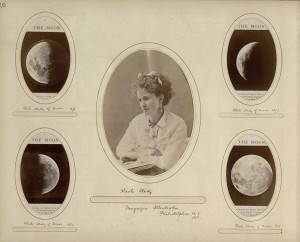
Miscellaneous, page 20, Sir Benjamin Stone Collection, Library of Birmingham
03 02 2015
Grain Publication
The new Grain publication was launched at The State of Photography symposium in January 2015. The colour newspaper style publication features a sample of our projects from the last 2 years and writings by our partners and collaborators.
The paper was designed to celebrate our first 2 years and to enable us to present and evaluate some of the exciting projects we have worked on with photographers, artists, participating audiences and partner organisations.
You can download a copy here
03 02 2015
Mining the Archive
A collaboration with The Swarm and University of Birmingham Digital Humanities Hub
This artistic R&D project, with The Swarm and University of Birmingham Digital Humanities Hub, investigated how institutional archives, such as that held by the Library of Birmingham, can be ‘crowd-connected’ through data-mining tools. The aim – to demonstrate how social media archives can build access points that drive engagement for libraries, galleries, and museums.
Photographer Adam Lee facilitated a series of community workshops, creating a new body of photographic tableaux with non-attenders of the Library.
Software was then used to create new connections and access points that drive engagement via the workshop participants social networks.
The tableaux enabled the workshop participants to build a personal connection to the work to stimulate interest from others in their social networks driving engagement (through tagging and similar).
The project enabled us to examine how we might crowd-connect and engage non-attenders and whether using the Mining the Archive engine can create new access points and engagement with archive content.
1. The Unknown
2. Progression
3. Education
4. Discovery
5. Empowerment
02 02 2015
5 PLUS 5
In 2015 GRAIN worked with five emerging photographers based in Madrid and five in Birmingham to create an exhibition dialogue. The invited photographers were David Sheperd, Dean O’Brien, Lauren Spencer, Nicola Onions and Oscar Parasiego, and from Madrid; Angela Losa, Anna Fawcus, Eoin Moylan, Inge Trienekens, and Juan Pablo Fassi.
The projects shown in this exhibitions orbit around themes such as memory, identity, space, the human condition and eternal subjects in the field of photographic creation. All the emerging practitioners selected to take part in this exhibition exchange use highly contemporary language and represent a new generation of globally connected artists that use the camera as one of many technological tools for image creation.
Part of GRAIN’s Professional Development Programme the activity contributed to the experience of emerging practitioners.
Moritz Neumüller (Linz, Austria, 1972) a curator, educator and writer in the field of Photography and New Media, was the key partner in Spain. . He holds a Masters Degree in Art History and a PhD degree in Information Management and has worked for several important art institutions, such as the Museum of Modern Art in New York, PhotoEspaña in Madrid and LOOP in Barcelona. Neu, müller is currently working as Festival Curator at PhotoIreland in Dublin, and directing a study program called European Master of Fine Art Photography for the Istituto di Design in Madrid. In 2009, Moritz Neumüller founded ArteConTacto, a project aimed at exploring art through all the senses, in order to provide access for all visitors, including the visually impaired. Since 2010, he has run The Curator Ship, a platform that provides useful information for visual artists.
Credit: © Oscar Parasiego 2014
10 12 2014
The State of Photography Symposium
9:30 am – 17:30 pm – Meeting Room 104, Floor 1, Library of Birmingham
The State of Photography event will explore, debate and review how photographers and photography practice develops, responds and thrives in the current challenging times. During the Symposium we will hear from the perspective of the photographer, curator, festival director, agent and publisher. With a focus on innovation and sustainability speakers will convey what it takes to not only survive but to expand and thrive. The day will explore and celebrate self-initiated projects and entrepreneurialism by hearing from a range of photographic projects that are current and at the cutting edge of photography now.
The State of Photography Symposium will form the culmination of 2 years of the GRAIN project and will bring together practitioners and professionals from the sector to talk about the artform and current climate, to present questions and challenging new ideas, as well as offering advice and talking about positive approaches to influence change, encourage leadership and growth.
Speakers include:
- Adam Broomberg & Oliver Chanarin
- David Birkitt
- Tim Clark
- Ángel Luis González
- Louise Clements
- Uncertain States Magazine
- Lara Ratnaraja
- Karen Newman
- Paul Herrmann
- Faye Claridge
- Peta Murphy-Burke
Prices
- Early Bird Concession: £15
- Early Bird Standard: £18
- Concession: £18
- Standard: £22
Early Bird available until 31st December 2014.
Click here for tickets.
*Please note prices include tea/coffee in breaks but do not include lunch.
Image Credit: by Martin Parr, at DMB and Magnum Photos.
02 12 2014
I Sell the Shadow to Save the Substance
In 2014 recent graduate Lucy Hutchinson was awarded a residency to respond to the collection at the Library of Birmingham and make new work for exhibition. I Sell the Shadow to Save the Substance was based upton the artist’s research into the Carte-de-Visite archives at the Library of Birmingham. Through the archive she explored aspects of gesture, class, status and wealth and in her new work performed for the camera to create female identities directly inspired by the archive.
By merging contemporary and historical symbols linked with ‘Britishness’—from influential designers to concepts of moral hierarchy within the British middle class—the artist explored how these characters displayed their status. The artwork questioned the significance of authenticity in images and probed how these individuals represented their social standing.
The work was exhibited on The Photographers’ Wall, The Library of Birmingham.
Image Credit: © Lucy Hutchinson
19 11 2014
The City of Six Towns
In 2015 Mark Power was commissioned to make new work in Stoke on Trent to feature in a largescale exhibition in the public realm.
The new commission and exhibition, entitled The City of Six Towns, featured 50 new works from Power and was a distinct illustration of the city as he found it. Like visual stories or postcards from the city the work created was about Power’s findings and how the city presented itself to him. During the commission Power held conversations, meetings and talks to engage with people and explore the spaces and places in the city inspired by their comments.
The exhibition was located outdoors in the city centre square for eight weeks.
A collaboration with Appetite, Creative People and Places.
Image credit: © Mark Power
13 10 2014
Guangzhou Exchange
Birmingham based artists and photographers Andrew Lacon and Stuart Whipps were commissioned for this opportunity as a follow-up to the work they had created for REFERENCE WORKS, the inaugural exhibition at the Library of Birmingham.
The exchange built on their relationship to the Library of Birmingham and commented on the twinning of Birmingham, Guangzhou, China, and their celebrated new library buildings that held an official Memorandum of Understanding.
The artists visited Guangzhou, its library and collections and interrogated the shared and divergent histories of the two cities, exploring a series of complex relationships: The relationship between the materials of the former and current buildings, the similarities and differences that exist between the material housed in the two libraries, and the relationships between the people of the respective cities and their former and present libraries and collections.
The resulting work was exhibited at Guangzhou Library Gallery.
Supported by British Council, Arts Council England, Guangzhou Library and Library of Birmingham
01 10 2014
EMPIRE
In 2014/2015 GRAIN supported the exhibition of EMPIRE by Jon Tonks as part of the touring programme. Since completing the project in 2013 the book of photographs was published by Dewi Lewis publishing it then toured as an exhibition to MAC, Birmingham, the Library of Birmingham, Ffotogallery, Cardiff and Impressions, Bradford.
Empire is a fascinating journey across the South Atlantic exploring life on four remote islands – the British Overseas Territories of Ascension Island, Tristan da Cunha, the Falkland Islands and St Helena – relics of the once formidable British Empire, all intertwined through their shared history.
Jon Tonks began the project in 2007, spending up to a month at a time in each territory, travelling 60,000 miles around the Atlantic via military outposts, low-lit airstrips and a long voyage aboard the last working Royal Mail Ship. Some 400 rolls of film, 24 flights and 32 days at sea later, the resulting work creates an insight into these distant places that resonate with a sense of Britishness which is remarkably recognisable yet inescapably strange. Jon photographed the people, the landscapes and the traces of the past embedded within each territory.
17 09 2014
PLANE MATERIALS
In 2014 GRAIN Projects invited curator Nathaniel Pitt of Division of Labour, to curate ‘Plane Materials’ for Photoworks Biennial. The artists featured were Cornford & Cross and Andrew Lacon who made new work exploring the interplay between photography and sculpture. Lacon’s practice, rooted in historical documents from the Library of Birmingham’s archive, focused on Roman antiquity and the framing of photographs of Roman sculpture. Cornford & Cross, with a non-studio based approach, generated their work through discussion and debate, presenting diverse conceptual ideas. This exhibition, a Photoworks, GRAIN, and Library of Birmingham Co-commission for Brighton Photo Biennial 2014, was showcased at the University of Brighton Gallery from October 4 to November 2, 2014. A publication with newly commissioned writing also accompanied the exhibition.
Above image credit: Andrew Lacon – Studio Collage (Bernini) 2014′
26 08 2014
Mat Collishaw Commission
Mat Collishaw was commissioned to research and produce work in response to the photography archive at the Library of Birmingham. After a dedicated research period, he created a new edition of his work available for purchase.
Known for his alluring, poetic, and shocking creations that explore themes from history and religion, often delving into the darker aspects of nature and human character, Collishaw’s visually diverse language captivates audiences. With a keen interest in the history of photography, its subjects, techniques, and machinery, he frequently references historical periods, particularly the Victorian era. The invitation to respond to the rich archive of the earliest photography at the Library of Birmingham aligns seamlessly with his artistic pursuits.
Born in Nottingham in 1966, Collishaw’s artistic journey began at Goldsmiths College of Art. His reputation was solidified with his participation in the legendary Freeze exhibition in 1988, where he exhibited the celebrated Bullet Hole. Over the past decade, his confrontational and challenging works have been showcased in numerous solo exhibitions globally, including notable venues like the Cohen Gallery in New York, Camden Arts Centre in London, and the Victoria & Albert Museum in London.
This co-commission was a collaboration between GRAIN, Library of Birmingham, and The New Art Gallery Walsall.
Image Credit: The Poisoned Page, 2013 – C-type photograph
15 08 2014
After the Image
In 2014 GRAIN worked in collaboration with the Library of Birmingham and Division of Labour to show work at UNSEEN Photo Fair, Amsterdam. Cornford & Cross, Andrew Lacon, and Stuart Whipps made new work for the international photography fair which is dedicated to new and emerging talent. The exhibition encouraged viewers, collectors, the public, and the market to transcend the image and perceive photography as a medium beyond conventional boundaries. The project was curated by Nathanial Pitt, known as AFTER THE IMAGE, and was part of an Art Market Development project supported by Birmingham City University and Arts Council England, taking place from September 18 to 21, 2014, at Amsterdam Westergasfabriek.
18 03 2014
GRAIN Growth
GRAIN recognized the importance of investing in the region’s photography infrastructure and cultivating enablers and connectors with influence within the photography community. In collaboration with consultant Lara Ratnaraja, a Business Development Project was developed to engage beneficiaries in focused efforts to enhance their existing business competencies and ensure future growth and sustainability. This specialised initiative aligned with GRAIN’s objectives for high-quality activity, collaboration, and impact.
The initial three beneficiaries of this program included Karen Newman, who received support for the creation and development of BOM, Birmingham Loves Photographers, which received assistance in business development and fundraising, and SQUARE, which received support for business development and the expansion of their exhibition program.
Image: Square Magazine – Patricia van de Camp; Urban
14 01 2014
The Photographers’ Wall
THE PHOTOGRAPHERS’ WALL has been developed as a space in the Library of Birmingham dedicated to photography and photographers.
Launched in January 2014 the space will feature the works of emerging and established fine art photographers and will highlight the ambition and talent of some of the regions best photographers.
For more details of the forth show featured on The Photographers’ Wall, new work by artist Lucy Hutchinson, click here. The body of work is the result of a residency undertaken at The Library of Birmingham, awarded by Turning Point West Midlands.
From the 25th of February to the 29th of April 2015 the fifth exhibition to feature on The Photographers Wall will be on display. For more information about 5 Plus 5 click here.
17 04 2013
The Black Kingdom
GRAIN was delighted to be one of the partners in ‘The Black Kingdom’ by Brian Griffin, published by Dewi Lewis.
Recognised as one of the UK’s most important photographers of the last fifty years, Brian Griffin grew up near Birmingham amongst the factories of the Black Country. His parents were factory workers and from birth Griffin seemed set to follow in their footsteps. And so, on leaving school at the age 16, he began working in a factory, just like everyone else around him. A year later he moved to British Steel working as a trainee pipework engineering estimator in a job that involved costing systems for the nuclear power stations that were then being built. He remained there four years before escaping the tedium of the office by enrolling to study photography at Manchester College of Art.
The Black Kingdom is a visual autobiography of Brian Griffin’s life during the 1950s and 60s where everything surrounding him seemed to emanate from the factory. The book is a dissection of life in industrial England after the Second World War and shows the influences that would inspire the creative output of a highly successful photographer. For Griffin, those first 21 years living in a warren of terraced streets set amongst factories and continually polluted by their smells and noise, remain indelibly printed on him and have shaped the person he is.
Brian Griffin has exhibited and published widely. In 1989 he had a one-man show at the National Portrait Gallery, London. The same year The Guardian newspaper selected him as ‘The Photographer of the Decade’ and LIFE magazine used his photograph ‘A Broken Frame’ as the covershot for their feature ‘Greatest Photographs of the Eighties’. During the 1990s Brian Griffin retired from photography and focused on directing advertising, pop videos and short films. He returned to photography in 2001, reestablishing himself once again at the pinacle of British Photography.
Purchase the book here.
28 02 2013
Findings
GRAIN commissioned internationally acclaimed artist and photographer Tom Hunter to make a new body of work in Birmingham finding, exploring and revealing places and spaces in Colmore Business District and the Jewellery Quarter.
Tom Hunter said of the commission; ‘’For me this project is a journey back into the country’s industrial heritage and at the same time a personal journey into my own history. Many of the buildings I have photographed are monuments to this industrial past, showing us the fingerprints of working lives and the products that these endeavours created and from them a way of life and culture. I have always been attracted to these shrines from a disappearing world, a world my grandfather was meshed too, with his engineering company in Birmingham. A world I have explored through photography in Hackney Wick, where the industrial landscape became a playground for the dispossessed, and is now reincarnated as an Olympic wonderland.
All these elements have aligned themselves in this photographic essay, connecting my history to my country’s and Birmingham to Hackney. In the same way Alexander Parkes of Birmingham invented Parkesine, the base material of my film and took it to Hackney Wick to be mass-produced, I now take my pinhole photography back in time to Birmingham, to illuminate and document this very special place.”
Hunter employed a pinhole camera to make the work which had an intensity and painterly quality with dramatic dark and light been a key feature. The work was exhibited as a largescale outdoor exhibition in April – July 2013 across two city squares in Birmingham city centre

